Useful Strategies for Teaching Fourth Grade Writing:Think Outside the Box
- Melissa Matters
- Categories : Lesson plans & worksheets for grades 3 to 5
- Tags : Teaching grades pre k to 5
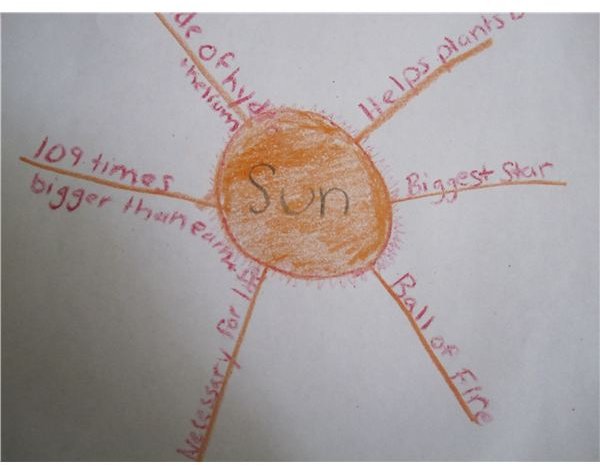
These strategies for teaching fourth grade writing include using picture books to teach summarizing and story writing skills, highlighting and note taking for expository writing, using graphic organizers to plan writing and peer editing and rubrics to fine tune writing.

The Big Picture
Sometimes, students don’t realize what a story sounds like. By the time students are in fourth grade, it’s plausible they’ve read quite a few picture books. Yet, have they ever examined the elements of a picture book? How does the story start? What is dialogue? Who are the characters? What is the problem in the story and how is it resolved? These are all questions that should be asked prior to reading a picture book. As the teacher reads the tale, he or she should stop every two pages and try to answer at least one of the above questions.
Picture books are also wonderful for teaching kids to summarize. Pick shorter children’s books with a clear protagonist, antagonist, conflict, rising action, climax and resolution. After each page, write down the main events. After reading, students can write a summary.
Describe it: Use Sensory Details
Many times, students will learn how to write a descriptive paragraph and then to write a story. These two topics are not separate entities but rather should be incorporated. Learning to use sensory details in a narrative is a vital part of the writing process.
Two Bad Ants by Chris Van Allsburg is a great book to teach description. Two curious ants go inside a home and get left behind. Through exploring the house, they come across items like toasters, sugar and a garbage disposal. Yet, the author never says the location of the ants. Rather, he describes the toaster so vividly that the reader knows it is a toaster.
Elbert’s Bad Word by Audrey Wood is another good book to teach “show not tell.” Elbert, a little boy, says a bad word. We never know what the bad word is, yet, the reader knows it is a curse word based on the descriptive language.
After reading these books, students can practice describing an item, setting or character in detail. Later, this description can be used in a narrative.
Make a Plan: Graphic Organizers
The types of graphic organizers are limitless. Some graphic organizers can look boring. Thus, instead of a basic story map, have kids draw a mountain or a roller coaster track. At the bottom, have them jot down a few notes about their setting and main characters. The conflict should be written at the bottom of the mountain or coaster. Then, have them write about five main events on the mountain slope. At the peak of the mountain should be the climax. On the other side of the mountain is resolution and falling action.
Sandwich graphic organizers will be a hit with any fourth grade class. Kids can construct a favorite sandwich out of construction paper. They need to have two pieces of bread and three fillings. The bread of the sandwich can be used to note a topic sentence and conclusion sentence. The filling can be the backdrop for three supporting details. Staple the sandwiches together and kids can use it to write an informational paragraph. This graphic organizer can also be used to help kids write a nonfiction or expository summary.
Using graphic organizers for writing is essential for prewriting, organizing ideas and brainstorming. A simple cluster map is perfect for brainstorming. Use one for each character in a story. Have children make one large circle in the center and five to six small circles stemming from the center circle. In the center circle, write the name of the character and whether or not it is a protagonist or antagonist. In the surrounding circles, students should write down character traits such as physical appearance, personality traits, and other important ideas about that person.
Instead of circle clusters, kids can make flowers with a main idea in the center and supporting ideas on the petals. Using a spider to plan a story about Halloween is also a fun idea. The setting can be on the body of the spider with the sensory details on its legs. Another idea for example, is to plan an informational report about the sun on a sun graphic organizer. The possibilities for kids to make unique graphic organizers are endless.
Fun Graphic Organizer Examples
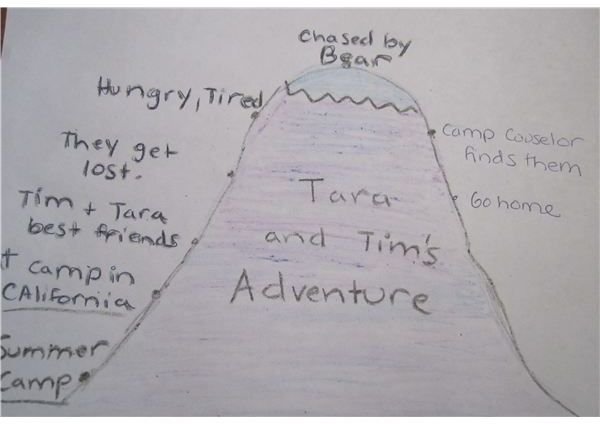
Checklists and Rubrics
Rubrics and checklists are a helpful way to help students gauge if they are going in the right direction. For a summary of expository, a rubric should include the following:
- Each paragraph is indented
- Sentences start differently
- Punctuation is used
- Transition words (next, also, finally) are used
- Proper spelling is exhibited
- The summary begins with a topic sentence/main idea
- Sentences vary in length and structure
For a narrative, a rubric would be very different. It would include a checklist similar to this:
- Story begins in an interesting manner
- Story has a setting and main characters
- There is a conflict and rising action
- Descriptive words are used
- Writer uses quotation marks when a character is talking.
- Proper spelling and punctuation is used
- There is a climax and resolution
Rubrics are often used for grading writing. If students become accustomed to using a rubric while writing, then they will start recognizing how their stories and summaries are graded. Often times, rubrics use a point system. A four may be given for excellent work, a three for good work, a two for satisfactory work and a one if their work needs improvement. When creating a rubric , it is important to keep it simple and focus on the key elements you want students to master.
Peer Editing
Rubrics can be used with peer editing. Peer editing can be done in pairs or in a group. In pairs, students can exchange papers and use a pen to circle possible misspelled words and look for errors in punctuation. At the end of the work, peer editors can write down three praises and three suggestions to help improve their partner’s writing.
In a group, students can read their stories orally. This needs to be done in an environment where respect and trust has been formed. As students read their writings aloud, they may notice places where they need to make changes. Each student in the group should write down praises and suggestions too.
Peer editing needs to be modeled. Doing a lesson on peer editing will be helpful.
In summary, students will enjoy writing more if it is fun. Using these writing strategies will help your fourth grade students understand the writing process and provide them with the tools to become successful novice writers.
Sources and Photo Credits
Van Allsburg, Chris. Two Bad Ants. Houghton Mifflin Books for Children: New York, 1988.
Wood, Audrey. Elbert’s Bad Word . Harcourt Brace: Singapore, 1988.
Author’s classroom experience
Photos taken by author
4th grade writing
by: Jessica Kelmon | Updated: August 4, 2022
Print article

In fourth grade, study skills play an important role in your child’s writing. Kids do research using multiple sources. They also learn to take notes on what they research, read. and hear. And even stories are more advanced, with more developed characters who show their feelings and react to what happens. And perhaps most important, your child is expected to analyze a book’s structure, logic, details, and evidence in their writing. It’s all pretty impressive!
Building 4th grade study skills
This year taking notes is an important skill. Fourth graders are expected to use books, periodicals, websites, and other digital sources to conduct research projects — both on their own and as part of group work with peers. Your child should keep track of all the sources they check — noting what they learn, the name of the source and page number or url so they can find it again and create a source list or bibliography later.
Also, taking notes while reading fiction will help your child when it comes time to analyze what they’ve read or to give an in-depth description of a character, setting, or story event drawing on specific details.
Check out this related worksheet: • Finding key points
bttr, better, best!
Last year’s prewriting step — planning — becomes more essential in your child’s writing process this year. Before your child sits down to write, they should use their organized notes to help create the structure of whatever they’re writing. While planning , your child may brainstorm ideas for a story or decide how to organize facts into a cohesive set of points. The more knowledge your child builds during the prewriting stage, the easier it will be to write. Encourage reading and rereading, taking notes, finding additional sources, discussing aloud how new knowledge fits in with what your child knew before, and visually organizing what they plan to write about. After the first draft is written, the teacher and possibly other students will offer feedback: asking questions to elicit new details or clarify an argument or suggest new sources of information. They should check that there’s a clear introduction and conclusion, and that the order of points or events makes sense. Your child will then do a revision (or two), adding, reordering, and refining their writing to show deep understanding.
After making revisions, your child does a final edit focusing on spelling, grammar, punctuation, and strengthening word choices. These steps — planning, writing a first draft, revising, and editing the final piece — help fourth graders understand that research, organizing, clarifying ideas, and improving grammar and presentation are all essential to strong writing.
See what your fourth grade writing looks like

Fourth grade writing: opinion pieces
Your child’s opinions always need to be supported by evidence. Persuasive writing should start by clearly introducing an opinion on a topic. To support their opinion, kids need to present their argument, which is a list of reasons why they hold that opinion. Each of their reasons needs to be supported by facts and details (a.k.a. evidence). After presenting all of their research-supported reasons, kids should close their arguments with a concluding statement or paragraph that sums up how their evidence supports their opinion.
Check out this example of good fourth grade opinion writing: • “ Zoos should close ”
Fourth grade writing: informative writing
This year, your child’s informative writing gets more organized, with headers, illustrations and even multimedia components to support specific points. To begin, your child should introduce the topic. Then they should use facts, definitions, details, quotes, examples, and other information to develop their topic into a few clear, well thought-out paragraphs. Your fourth grader should use advanced linking words (e.g. also, another, for example, because ) to form compound and complex sentences connecting their research and ideas to the point they’re making. Finally, to wrap it up, your child should have a conclusion — either a statement or, if necessary, a section labeled conclusion.
Check out these three examples of good fourth grade informational writing: • “ John Cabot and the Rediscovery of North America ” • “ Big Book of Evolution ” • “ Book report: A Tale of Despereaux ”
Can your fourth grader write an informational essay?

Fourth grade writing: narratives
A narrative means writing a story. This year your child will be expected to use storytelling techniques, descriptive details, and clear sequences to tell compelling tales. Whether inspired by a favorite book, real events, or your child’s imagination, your child’s story should use dialogue, descriptive words, and transitional language. Look for precise language and sensory details that bring characters to life. Finally, your child should keep pacing and sequence of events in mind. The events should unfold naturally, bringing the story to a natural conclusion. Are surprise endings okay? Sure… so long as the details and events plausibly lead there.
Check out this related worksheet: • Putting sentences in order
Gettin’ good at grammar
You may want to review all those parts of speech your child learned last year because fourth grade grammar is expected to be quite accurate. Your child should know relative pronouns (e.g. who, whose, whom, which, that ), relative adverbs (e.g. where, when, why ), adjective ordering (e.g. short dark hair and small red bag ), descriptive prepositional phrases (e.g. in the air, down the block, on the grass ), progressive past, present, and future verbs (e.g. I was walking, I am walking, I will be walking ), and verbs used with other verbs to express mood or tense (aka modal auxiliaries, e.g. can, may, must, should, would ). Also, your child needs to master the distinctions between frequently confused words like to , too , and two and there , their , and they’re . Finally, your child should be able to recognize and correct run-on sentences.
Check out these related worksheets: • Prepositions • Compound sentences • Punctuating a paragraph • Its or it’s?
Learning to use language precisely
This means:
- Recognizing and explaining common idioms (e.g. bending over backwards )
- Distinguishing between similes and metaphors (e.g. quiet as a mouse and the sun is a yellow beach ball ).
- Identifying and using synonyms and antonyms
- Using increasingly specific words in writing (e.g. glamorous instead of pretty, pre-dawn instead of morning, quizzed instead of asked )
Your fourth grader should now be using relevant academic words in informational writing and research reports. Although accurate spelling should be the norm in fourth grade, when faced with spelling more academic words, your child should use a dictionary and thesaurus (print and digital versions).
Check out these related worksheets: • 4th grade weekly spelling lists • Making metaphors • Simile or cliché?
Sharing their work
Most classrooms will encourage (if not require) kids to use technology to produce and publish their writing. Your fourth grader should be able to type up to a full page in one sitting. While teachers should be there to help, your child should be doing the work. Students will also be expected to interact with peers about each other’s work. What might that look like? Your child might read a classmates’ published work online and comment on it, or cite a peer’s work when answering a question in class.
Updated August 2022
Homes Nearby
Homes for rent and sale near schools

6 ways to improve a college essay

Quick writing tips for every age

Writing on the wall
Why parents must teach writing
Yes! Sign me up for updates relevant to my child's grade.
Please enter a valid email address
Thank you for signing up!
Server Issue: Please try again later. Sorry for the inconvenience
- Book Lists by Age
- Book Lists by Category
- Reading Resources
- Language & Speech
- Raise a Reader Blog
- Back to School
- Success Guides by Grade
- Homework Help
- Social & Emotional Learning
- Activities for Kids
The Guide to 4th Grade: Reading and Writing
Review reading and writing curricula for 4th grade, including what to expect and resources to support learning..
Congratulations: Your child is officially a member of the “upper” grades! As fourth graders, students deepen their skills to prepare for middle school. That being said, they still learn like elementary school students do. Most fourth graders are developmentally very much still children — they enjoy and learn from play, and they thrive in nurturing and warm environments. However, the content of most 4th grade curricula pushes students to think, analyze, and learn in more sophisticated and structured ways than they did in the “lower” grades.
In 4th grade, students learn how to deeply think about and make connections in new material, and grasp more complex concepts across all subjects. They also write with clarity, flow, and structure similar to that of traditional essays. Fourth graders are encouraged to be more independent in how they learn, and depend less on their teacher's guidance. They research, plan, and revise their work more by themselves — setting the foundation to be lifelong, self-starting learners.
Read on for what to expect this year, and shop all books and resources for 4th grade at The Scholastic Store .
For more book and reading ideas, sign up for our Scholastic Parents newsletter!
Reading in 4th Grade
Much of the 4th grade reading curriculum teaches students how to analyze the books they read. Rather than just understand the plot and information given in a text, students are encouraged to think about the messages and how they relate to their own lives. They also compare texts to each other and make connections both within one text and across multiple texts.
In short, 4th graders begin to learn how to think and talk about a text to find deeper meanings and messages. This is done both with texts students read independently and those read by the whole class or smaller groups of students. Teachers may often use a class read-aloud to show students strategies for thinking about and analyzing what they read, encouraging them to do this in their own reading. Students also do this as they write in more detail about the texts they read.
To build reading skills, your 4th grader :
- Uses specific examples from the text to explain characters’ motivations, main events, central themes, or ideas about a text.
- Uses the context of a text to determine the meaning of a word.
- Understands and can explain the differences between narrative prose, drama, and poetry.
- Identifies and refers to the different parts of poems and plays, such as verses, settings, and characters.
- Interprets and connects information from illustrations, graphs, charts, or other sources related to the text.
- Identifies, compares, and contrasts different perspectives from which texts are written (for example, first and third person).
- Compares and contrasts the way different texts address the same issue, theme, or topic.
- Makes connections between people, events, or important ideas in a text.
- Uses previous knowledge to read unfamiliar multi-syllable words.
- Reads grade-level texts with accurate comprehension, pacing, and expression.
Fourth Grade Reading Activities
Read and Research Together : Read the same book as your child independently, together, or a combination of both. Talk about the book as you read it, reviewing main ideas and plots and expressing your opinions. Then read an additional book or books on the same subject and compare and contrast how they dealt with the same issue.
Compare Perspectives : Read two texts — one written in first person and one in third person — about the same event. Talk with your child about the differences and why they thinks these differences exist. Or, try it yourself! After sharing an experience with your child, each of you can write about it from your own perspective. Talk about the differences between what you wrote to gain a better understanding of perspective.
Read magazine and newspaper articles. Focus on the illustrations, graphs, or charts. Point out to your child what they show, ask them to help you interpret them, and discuss how they help explain or elaborate on the text.
Writing in 4th Grade
Much of the 4th grade writing curriculum focuses on developing writing that has clarity and structure, and that uses reasons, facts, and details to support and strengthen arguments. Fourth graders are taught to organize their writing, ensure that it flows well, and group together related components. As students learn to think more deeply about concepts they are taught, they are encouraged to write in deeper ways as well. They do this by going beyond simply stating the facts — they express ideas, make connections, and provide details and emotions when appropriate.
To build writing skills, your 4th grader :
- Writes opinion pieces that express a point of view; have an introduction, a conclusion, reasons, and facts to support the opinion; and group together related ideas.
- Writes informative/explanatory pieces that present information on a topic, use facts and details, and group together related topics; provides introductions and conclusions in these pieces.
- Writes narrative pieces that use specific details, descriptions, and dialogue to convey a real event; includes an introduction and conclusion in each piece.
- Plans, revises, and edits their writing.
- Uses technology to publish, research, and communicate with others under the proper guidance of an adult or teacher.
- Types with a beginner’s accuracy and ability (for example, types one page of text within one sitting).
- Completes research projects by taking notes, organizing them, and presenting them; lists the texts and resources used.
- Writes for both long (over weeks) and shorter (one sitting or a couple of days) periods of time.
Fourth Grade Writing Activities
Ask Why : When your child expresses their opinion about something, ask them why they think that or how they know it is true. This will help them learn to support their opinion with reasons and/or facts. Do the same when you express your opinion or ideas about something.
Email with your Child : Set up an email account for your child and write emails describing your days to each other. Include details, conversations, thoughts, and emotions you had. This can be done in addition to generally encouraging (and supervising) your child’s use of technology — helping them use it for research, writing, and communicating with others. As always, be cautious of your child’s technology use by monitoring and supervising how much it is used and with whom they communicate.
Practice Note Taking : When you and your child go somewhere like a museum or a new city, pretend to be reporters and take notes (give them a journal they'll love to take notes in, like the Klutz: Decorate This Journal ). Later on, use those notes to describe what you learned. You can even relay your “reports” like a newscaster would.
Shop the best resources for fourth grade below! You can find all books and activities at The Scholastic Store .
Explore other grade guides:
- Kindergarten
- First Grade
- Second Grade
- Third Grade
- Fifth Grade
- Sixth Grade
- Seventh Grade
- Eighth Grade
Your 4th Grade Book Checklist
Sign up and get 10% off books.
Classroom Q&A
With larry ferlazzo.
In this EdWeek blog, an experiment in knowledge-gathering, Ferlazzo will address readers’ questions on classroom management, ELL instruction, lesson planning, and other issues facing teachers. Send your questions to [email protected]. Read more from this blog.
Four Strategies for Effective Writing Instruction

- Share article
(This is the first post in a two-part series.)
The new question-of-the-week is:
What is the single most effective instructional strategy you have used to teach writing?
Teaching and learning good writing can be a challenge to educators and students alike.
The topic is no stranger to this column—you can see many previous related posts at Writing Instruction .
But I don’t think any of us can get too much good instructional advice in this area.
Today, Jenny Vo, Michele Morgan, and Joy Hamm share wisdom gained from their teaching experience.
Before I turn over the column to them, though, I’d like to share my favorite tool(s).
Graphic organizers, including writing frames (which are basically more expansive sentence starters) and writing structures (which function more as guides and less as “fill-in-the-blanks”) are critical elements of my writing instruction.
You can see an example of how I incorporate them in my seven-week story-writing unit and in the adaptations I made in it for concurrent teaching.
You might also be interested in The Best Scaffolded Writing Frames For Students .
Now, to today’s guests:
‘Shared Writing’
Jenny Vo earned her B.A. in English from Rice University and her M.Ed. in educational leadership from Lamar University. She has worked with English-learners during all of her 24 years in education and is currently an ESL ISST in Katy ISD in Katy, Texas. Jenny is the president-elect of TexTESOL IV and works to advocate for all ELs:
The single most effective instructional strategy that I have used to teach writing is shared writing. Shared writing is when the teacher and students write collaboratively. In shared writing, the teacher is the primary holder of the pen, even though the process is a collaborative one. The teacher serves as the scribe, while also questioning and prompting the students.
The students engage in discussions with the teacher and their peers on what should be included in the text. Shared writing can be done with the whole class or as a small-group activity.
There are two reasons why I love using shared writing. One, it is a great opportunity for the teacher to model the structures and functions of different types of writing while also weaving in lessons on spelling, punctuation, and grammar.
It is a perfect activity to do at the beginning of the unit for a new genre. Use shared writing to introduce the students to the purpose of the genre. Model the writing process from beginning to end, taking the students from idea generation to planning to drafting to revising to publishing. As you are writing, make sure you refrain from making errors, as you want your finished product to serve as a high-quality model for the students to refer back to as they write independently.
Another reason why I love using shared writing is that it connects the writing process with oral language. As the students co-construct the writing piece with the teacher, they are orally expressing their ideas and listening to the ideas of their classmates. It gives them the opportunity to practice rehearsing what they are going to say before it is written down on paper. Shared writing gives the teacher many opportunities to encourage their quieter or more reluctant students to engage in the discussion with the types of questions the teacher asks.
Writing well is a skill that is developed over time with much practice. Shared writing allows students to engage in the writing process while observing the construction of a high-quality sample. It is a very effective instructional strategy used to teach writing.

‘Four Square’
Michele Morgan has been writing IEPs and behavior plans to help students be more successful for 17 years. She is a national-board-certified teacher, Utah Teacher Fellow with Hope Street Group, and a special education elementary new-teacher specialist with the Granite school district. Follow her @MicheleTMorgan1:
For many students, writing is the most dreaded part of the school day. Writing involves many complex processes that students have to engage in before they produce a product—they must determine what they will write about, they must organize their thoughts into a logical sequence, and they must do the actual writing, whether on a computer or by hand. Still they are not done—they must edit their writing and revise mistakes. With all of that, it’s no wonder that students struggle with writing assignments.
In my years working with elementary special education students, I have found that writing is the most difficult subject to teach. Not only do my students struggle with the writing process, but they often have the added difficulties of not knowing how to spell words and not understanding how to use punctuation correctly. That is why the single most effective strategy I use when teaching writing is the Four Square graphic organizer.
The Four Square instructional strategy was developed in 1999 by Judith S. Gould and Evan Jay Gould. When I first started teaching, a colleague allowed me to borrow the Goulds’ book about using the Four Square method, and I have used it ever since. The Four Square is a graphic organizer that students can make themselves when given a blank sheet of paper. They fold it into four squares and draw a box in the middle of the page. The genius of this instructional strategy is that it can be used by any student, in any grade level, for any writing assignment. These are some of the ways I have used this strategy successfully with my students:
* Writing sentences: Students can write the topic for the sentence in the middle box, and in each square, they can draw pictures of details they want to add to their writing.
* Writing paragraphs: Students write the topic sentence in the middle box. They write a sentence containing a supporting detail in three of the squares and they write a concluding sentence in the last square.
* Writing short essays: Students write what information goes in the topic paragraph in the middle box, then list details to include in supporting paragraphs in the squares.
When I gave students writing assignments, the first thing I had them do was create a Four Square. We did this so often that it became automatic. After filling in the Four Square, they wrote rough drafts by copying their work off of the graphic organizer and into the correct format, either on lined paper or in a Word document. This worked for all of my special education students!
I was able to modify tasks using the Four Square so that all of my students could participate, regardless of their disabilities. Even if they did not know what to write about, they knew how to start the assignment (which is often the hardest part of getting it done!) and they grew to be more confident in their writing abilities.
In addition, when it was time to take the high-stakes state writing tests at the end of the year, this was a strategy my students could use to help them do well on the tests. I was able to give them a sheet of blank paper, and they knew what to do with it. I have used many different curriculum materials and programs to teach writing in the last 16 years, but the Four Square is the one strategy that I have used with every writing assignment, no matter the grade level, because it is so effective.

‘Swift Structures’
Joy Hamm has taught 11 years in a variety of English-language settings, ranging from kindergarten to adult learners. The last few years working with middle and high school Newcomers and completing her M.Ed in TESOL have fostered stronger advocacy in her district and beyond:
A majority of secondary content assessments include open-ended essay questions. Many students falter (not just ELs) because they are unaware of how to quickly organize their thoughts into a cohesive argument. In fact, the WIDA CAN DO Descriptors list level 5 writing proficiency as “organizing details logically and cohesively.” Thus, the most effective cross-curricular secondary writing strategy I use with my intermediate LTELs (long-term English-learners) is what I call “Swift Structures.” This term simply means reading a prompt across any content area and quickly jotting down an outline to organize a strong response.
To implement Swift Structures, begin by displaying a prompt and modeling how to swiftly create a bubble map or outline beginning with a thesis/opinion, then connecting the three main topics, which are each supported by at least three details. Emphasize this is NOT the time for complete sentences, just bulleted words or phrases.
Once the outline is completed, show your ELs how easy it is to plug in transitions, expand the bullets into detailed sentences, and add a brief introduction and conclusion. After modeling and guided practice, set a 5-10 minute timer and have students practice independently. Swift Structures is one of my weekly bell ringers, so students build confidence and skill over time. It is best to start with easy prompts where students have preformed opinions and knowledge in order to focus their attention on the thesis-topics-supporting-details outline, not struggling with the rigor of a content prompt.
Here is one easy prompt example: “Should students be allowed to use their cellphones in class?”
Swift Structure outline:
Thesis - Students should be allowed to use cellphones because (1) higher engagement (2) learning tools/apps (3) gain 21st-century skills
Topic 1. Cellphones create higher engagement in students...
Details A. interactive (Flipgrid, Kahoot)
B. less tempted by distractions
C. teaches responsibility
Topic 2. Furthermore,...access to learning tools...
A. Google Translate description
B. language practice (Duolingo)
C. content tutorials (Kahn Academy)
Topic 3. In addition,...practice 21st-century skills…
Details A. prep for workforce
B. access to information
C. time-management support
This bare-bones outline is like the frame of a house. Get the structure right, and it’s easier to fill in the interior decorating (style, grammar), roof (introduction) and driveway (conclusion). Without the frame, the roof and walls will fall apart, and the reader is left confused by circuitous rubble.
Once LTELs have mastered creating simple Swift Structures in less than 10 minutes, it is time to introduce complex questions similar to prompts found on content assessments or essays. Students need to gain assurance that they can quickly and logically explain and justify their opinions on multiple content essays without freezing under pressure.

Thanks to Jenny, Michele, and Joy for their contributions!
Please feel free to leave a comment with your reactions to the topic or directly to anything that has been said in this post.
Consider contributing a question to be answered in a future post. You can send one to me at [email protected] . When you send it in, let me know if I can use your real name if it’s selected or if you’d prefer remaining anonymous and have a pseudonym in mind.
You can also contact me on Twitter at @Larryferlazzo .
Education Week has published a collection of posts from this blog, along with new material, in an e-book form. It’s titled Classroom Management Q&As: Expert Strategies for Teaching .
Just a reminder; you can subscribe and receive updates from this blog via email (The RSS feed for this blog, and for all Ed Week articles, has been changed by the new redesign—new ones are not yet available). And if you missed any of the highlights from the first nine years of this blog, you can see a categorized list below.
- This Year’s Most Popular Q&A Posts
- Race & Racism in Schools
- School Closures & the Coronavirus Crisis
- Classroom-Management Advice
- Best Ways to Begin the School Year
- Best Ways to End the School Year
- Student Motivation & Social-Emotional Learning
- Implementing the Common Core
- Facing Gender Challenges in Education
- Teaching Social Studies
- Cooperative & Collaborative Learning
- Using Tech in the Classroom
- Student Voices
- Parent Engagement in Schools
- Teaching English-Language Learners
- Reading Instruction
- Writing Instruction
- Education Policy Issues
- Differentiating Instruction
- Math Instruction
- Science Instruction
- Advice for New Teachers
- Author Interviews
- Entering the Teaching Profession
- The Inclusive Classroom
- Learning & the Brain
- Administrator Leadership
- Teacher Leadership
- Relationships in Schools
- Professional Development
- Instructional Strategies
- Best of Classroom Q&A
- Professional Collaboration
- Classroom Organization
- Mistakes in Education
- Project-Based Learning
I am also creating a Twitter list including all contributors to this column .
The opinions expressed in Classroom Q&A With Larry Ferlazzo are strictly those of the author(s) and do not reflect the opinions or endorsement of Editorial Projects in Education, or any of its publications.
Sign Up for EdWeek Update
Edweek top school jobs.

Sign Up & Sign In


- teaching writing
How to Explain Text Evidence to Boost Writing Skills in 4th Grade: A Writing Strategy
Have your students ever struggled to explain text evidence when writing a response to a writing prompt? Trust me, they are not alone.
It's like they hit a wall of writer's block that makes them want to give up altogether. Sounds familiar, doesn't it?
Many students face this challenge, and it can be pretty frustrating.
So, if you're looking for ways to help your students overcome this writer's block at explaining text evidence, you've come to the right place!
In this blog post, I'm sharing a simple yet effective approach with a free step-by-step lesson plan to help your students become rock stars at explaining text evidence.
Table of Contents
Writing Strategy Background
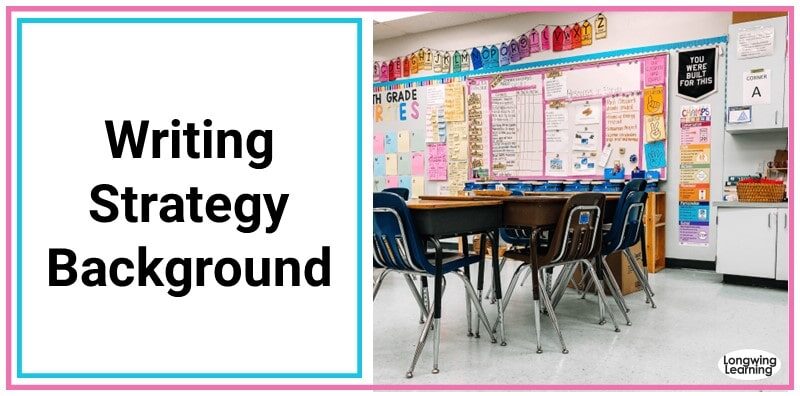
In my fourth-grade classroom, the biggest hurdle came when it was time to write their explanations on paper.
When asked why they chose a specific sentence to support their topic sentence, I asked them, “Why?”
Many could explain their reasons for selecting that particular text evidence.
However, all the words would disappear into thin air once they had to write them down.
So, here's what I did to help.
Each time they answered “why,” they had to focus on jotting down that one explanation.
Then, I continued asking them, “Why?” – just like those kids who incessantly ask their parents, “Are we there yet?”
All it took was answering that one question repeatedly: “Why?”
And guess what? This approach worked wonders.
It led me to create a graphic organizer for my students, which served as a starting point for them to gather their thoughts and get those wheels turning when it was time to explain their evidence.
How to Teach Students to Explain Text Evidence
Model the writing strategy.
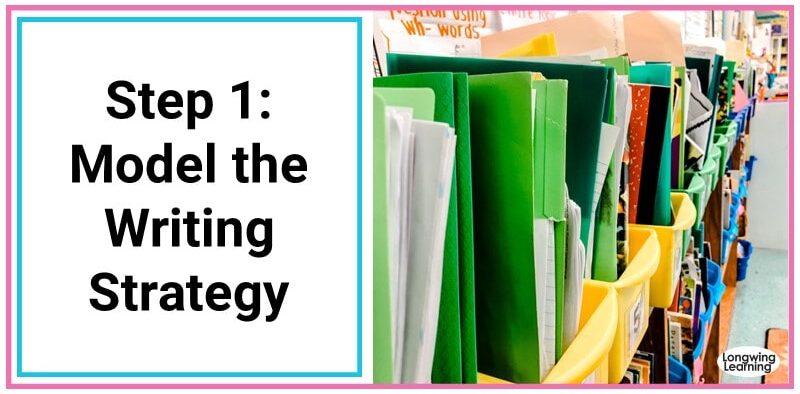
Let's break it down step by step!
Step 1: Get the ball rolling by having your students read the “Rainforests of the Sea” reading passage and the accompanying writing prompt.
The goal is to help them identify the text evidence they need to support their writing response.
Step 2: It's time to dive into the graphic organizer “Steps to Explain My Text Evidence,” it's a handy tool for your students to organize their thoughts.
Model to them how to answer each question in the organizer, adding more details as you go along. This step will help them understand how to explain the importance of coral reefs.
Step 3: Now, it's time to transfer the information from the graphic organizer to the Writing Response worksheet.
This is where your students will showcase their writing skills by crafting a well-rounded response. To guide them, you can refer to the answer key for some helpful insights.
Practice the Writing Strategy Together
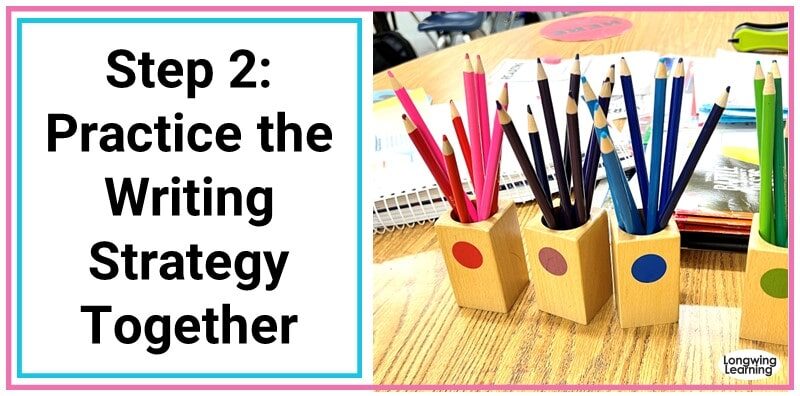
Now let's put the writing strategy into action with them!
Here's how you can guide your students through practice:
Step 1: Have your students collaborate with a partner or work independently to complete the graphic organizer.
The focus now is on kelp forests. Encourage them to refer back to the reading passage and select strong text evidence to support their ideas.
Step 2: Gather the student's answers and go through them together. This collaborative discussion will help clarify any doubts and reinforce their understanding.
Step 3 : Transfer their answers from the graphic organizer to the response sheet.
The writing response is now complete! Take a moment to celebrate their hard work.
To further enhance their understanding, point out the different parts of the paragraph.
Highlight how they effectively explained their text evidence and the overall structure of their response.
Students Practice the Writing Strategy Independently
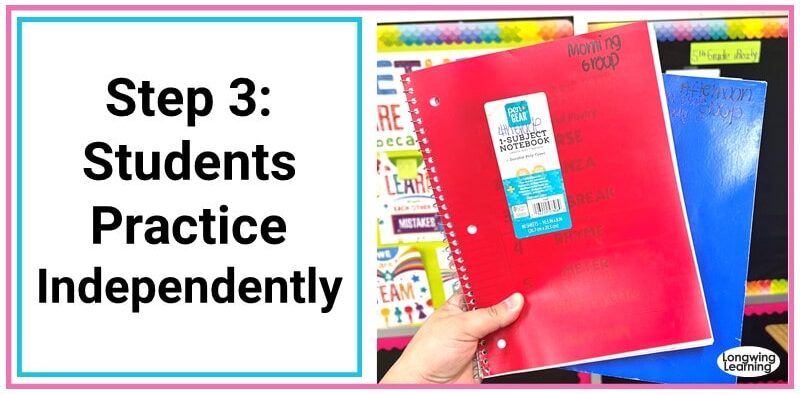
It's time for students to practice the writing strategy independently.
Provide them with the graphic organizer to revise a previous writing response or create a new writing prompt .
They can work with a different reading passage and writing prompt to continue honing their skills.
Students will gain a solid grasp of the writing strategy by practicing both collaboratively and independently.
It's all about giving them the opportunity to apply what they've learned and become confident writers who can explain text evidence like pros.
Click here to learn more about using picture books to boost writing skills.
More Writing Strategies to Explain Text Evidence
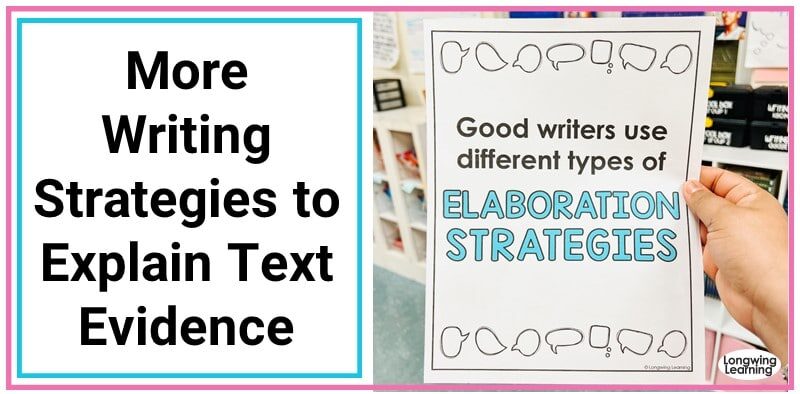
Continuing to help students become rock stars at explaining text evidence, it's all about giving them various writing tools to rock their writing game!
Here is a list of writing lessons to pair up with when teaching elaboration to boost their writing skills even more!
- Teaching students how to explain text evidence using the seven most common types of elaboration strategies in writing.
- Show them the power of transition words to connect their ideas within paragraphs, making their text evidence explanations even more compelling.
- Add different types of figurative language , such as similes, metaphors, and idioms , to expand on ideas and make their text evidence explanations soar.
Wrapping It Up
In conclusion, helping students overcome the challenge of explaining text evidence is crucial for their writing success.
By asking students “Why?” and encouraging them to tell their reasons for selecting specific text evidence help students explain their thoughts before writing their explanation.
To implement the writing strategy in your classroom, follow the step-by-step Guide. Model the process, practice with students, and allow them to apply the writing strategy independently.
It's all about giving them the necessary support and practice to master this crucial writing skill to explain text evidence in any writing task that comes their way!
Featured Resources
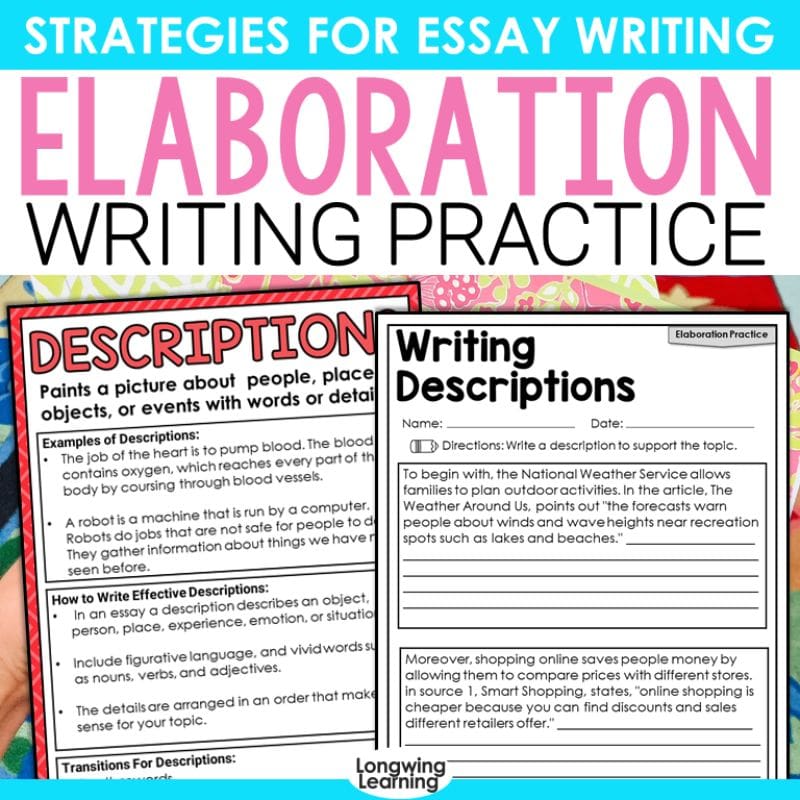
1 thought on “How to Explain Text Evidence to Boost Writing Skills in 4th Grade: A Writing Strategy”
Pingback: 7 Ways to Boost Engagement - Creative Classroom Core
Leave a Comment Cancel Reply
Your email address will not be published. Required fields are marked *
Vanessa I Longwing Learning
You might also enjoy....
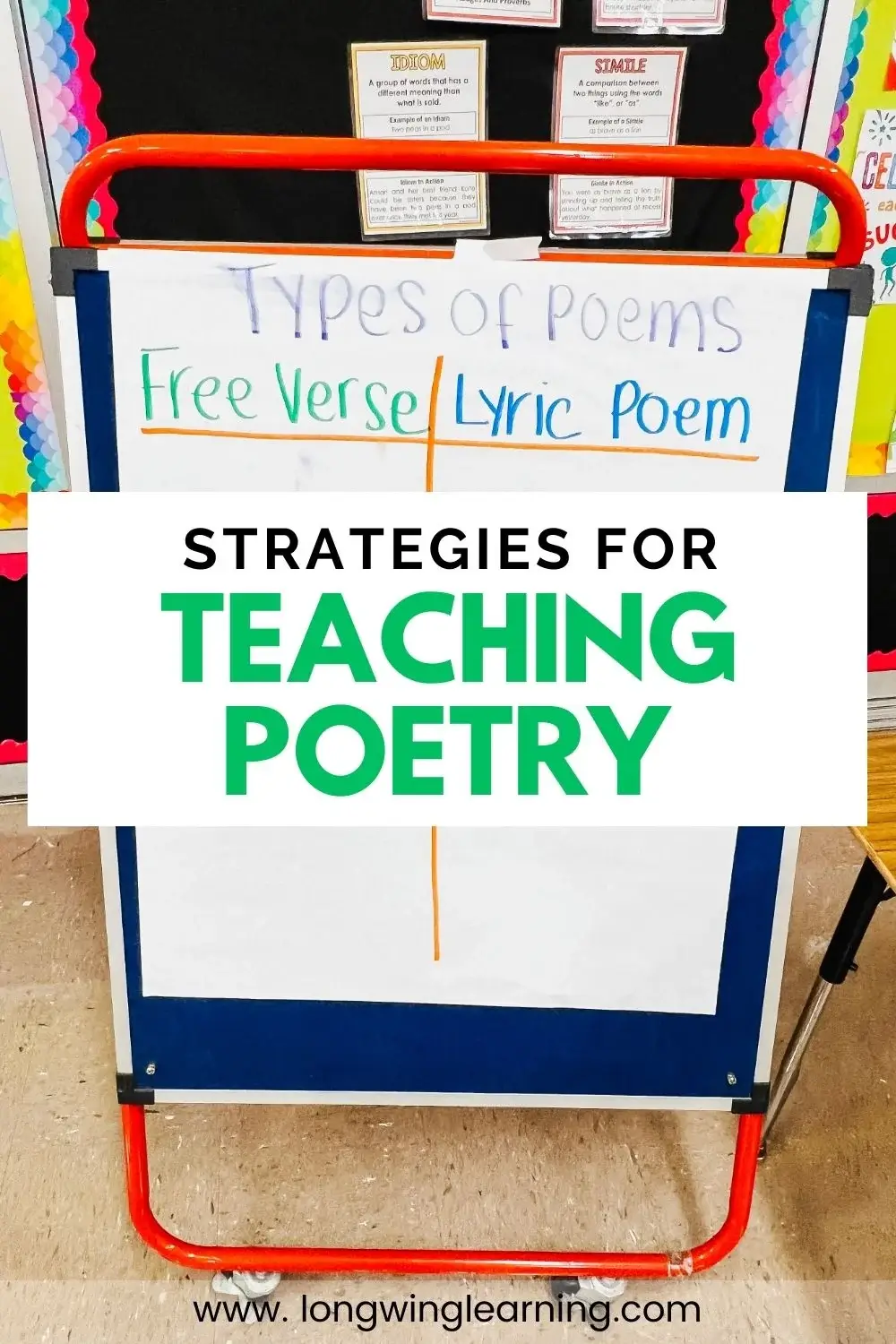
7 Strategies to Feel Confident Teaching Poetry in Upper Elementary

Practical Strategies for Teaching Elaboration and Adding Detail in Writing
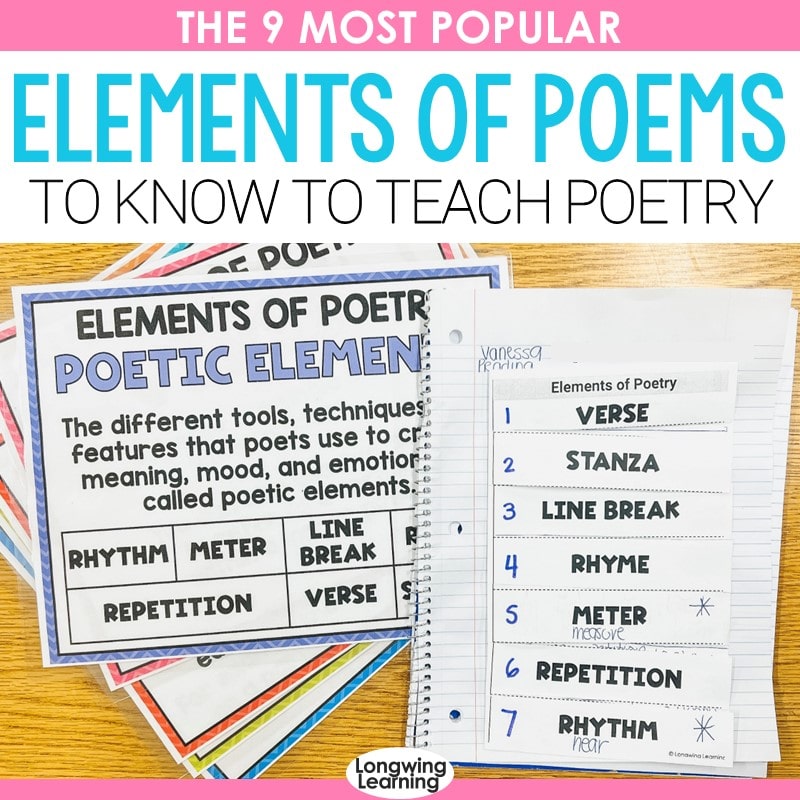
The 9 Popular Elements of Poetry To Teach Poetry
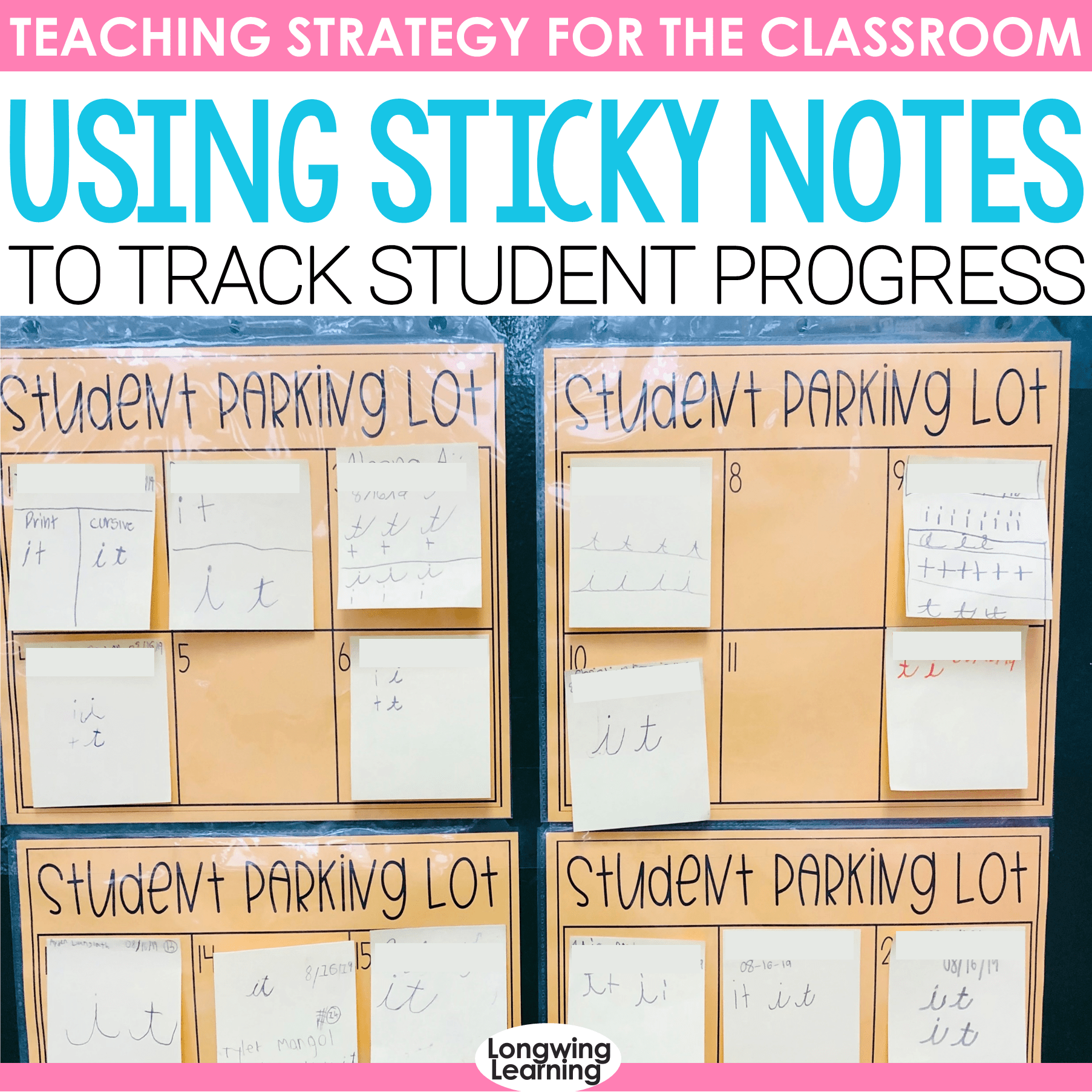
How I Use Post-Its to Track Student Progress with a Student Parking Lot
Four Simple Steps to Small-Group Guided Writing
- Resources & Preparation
- Instructional Plan
- Related Resources
This lesson describes small-group, guided writing lessons, which are taught in four steps for students who are in need of extra support. Students learn how to communicate information of interest, stimulated by discussion of Nicola Davies' Bat Loves the Night and several websites. Students learn three sets of strategies for writing: (1) engaging in writing with fluent, sustained attention, (2) writing informative titles, and (3) adding enough information to communicate clearly.
From Theory to Practice
- Teachers should provide explicit instruction targeting students' abilities to produce brief but complete writing products fluently and confidently, resulting in each student's improved drafts over time.
- Writing instruction must provide students with scaffolded opportunities to use oral conversation about a topic as direct support for their own writing and to use a set of specific strategies for independent writing.
- Writing instruction should include explicit instruction during student's own writing. Teachers "step in" to model and prompt and "step back" to encourage students to make decisions and solve problems about their own writing.
- Direct instruction in writing requires teachers to show how writing works across genres, formats, procedural knowledge, word usage, spelling, and punctuation.
- Assessment practices should show teachers which ideas, concepts, principles, and skills need to be taught to which students and for how long.
- Teachers should model and explain cognitive processes for writing to students and provide such curricular resources as small-group instruction.
Common Core Standards
This resource has been aligned to the Common Core State Standards for states in which they have been adopted. If a state does not appear in the drop-down, CCSS alignments are forthcoming.
State Standards
This lesson has been aligned to standards in the following states. If a state does not appear in the drop-down, standard alignments are not currently available for that state.
NCTE/IRA National Standards for the English Language Arts
- 4. Students adjust their use of spoken, written, and visual language (e.g., conventions, style, vocabulary) to communicate effectively with a variety of audiences and for different purposes.
- 5. Students employ a wide range of strategies as they write and use different writing process elements appropriately to communicate with different audiences for a variety of purposes.
- 8. Students use a variety of technological and information resources (e.g., libraries, databases, computer networks, video) to gather and synthesize information and to create and communicate knowledge.
- 11. Students participate as knowledgeable, reflective, creative, and critical members of a variety of literacy communities.
- 12. Students use spoken, written, and visual language to accomplish their own purposes (e.g., for learning, enjoyment, persuasion, and the exchange of information).
Materials and Technology
- Bat Loves the Night by Nicola Davies (Candlewick Press, 2001)
- Small-group writing table with room for you and a small group of students
- Computers with Internet access
- Writing paper or journal for each student
- Keep Writing!
- Write a Title!
- Write Lots of Details!
Preparation
Student objectives.
Students will
- Learn how to support their own engaged, sustained, and fluent writing by choosing and reflecting on one narrow but interesting focus and by rereading their own text when necessary for writing fluency
- Create appropriate titles for their writing of information-based text by considering the readers' viewpoints and developing an intent to interest potential readers
- Write brief texts of their own on topics of interest, including enough details for clarity, by choosing and reflecting on a narrow, interesting focus for writing and giving consideration to the full set of information needed for readers' interest and understanding
Instruction and Activities
Guided writing lessons are taught in four steps: (1) brief shared experience and discussion, (2) discussion of strategic behavior for writing, (3) time to write a new text each day with immediate teacher guidance, and (4) sharing. Each of these steps is implemented in each session of this lesson. These sessions should be taught at a brisk pace. Guided writing lessons are intervention lessons with a tight focus on improving each child's ability to use a small, specific set of cognitive strategies. They do not take the place of whole-class instruction. Your students should have ample opportunities in other contexts to write longer texts over an extended timeframe, discuss mentor texts with you and their peers, and observe your modeling of good writing behavior during whole-class lessons. Be direct and clear in the information you give to students during guided writing lessons and encourage active participation. Focus your instruction on strategic behavior for writing rather than on the accuracy and correctness of the writing product alone. Guided writing lessons usually occur while other students are writing independently and can be adapted to any topic. Session 1: Strategies for Sustained Engagement in Writing
Session 2: Understanding the Function of Titles for Information Text
Session 3: Adding Useful and Important Details about Your Topic
Student Assessment / Reflections
- Observe one student in particular each day during writing. Either during the lesson or soon after, write brief notes describing how that student went about his or her writing that day. You may want to observe how engaged and enthusiastic this student appeared to be during writing, for example, or note that he or she often got “stuck” during writing and needed lots of teacher support to continue. These observations should help you to modify your instruction and provide more support for a student’s area of needed improvement. For a student who frequently gets stuck, for example, useful prompts might be:
"Could your next sentence start with "Bats wings are…?" "Think about everything you know about bats.” "What books or information about bats could you look at to help yourself get ideas?”
- Complete the Analytic Assessment form (Fearn & Farnan, 2001) for each student and for each session. (You may find it useful to analyze one set of writing samples produced before these sessions as well.) Determine a short list of those skills and strategies that have been taught recently and examine students’ texts for those specific factors. Assess each student’s writing fluency, active engagement, use of an appropriate title, and inclusion of related details. This assessment should affect your decisions regarding which strategies to teach and the type of assistance to offer during writing, from one session to the next. Based on this analysis you may decide, for example, to teach more sessions on strategies for engaged, sustained writing rather than moving on to Sessions 2 and 3 right away. Plan your teaching so that each student’s drafts improve in specific, targeted ways from one session to the next.
Add new comment
- Print this resource
Explore Resources by Grade
- Kindergarten K
The Joy of Teaching
Sharing creative ideas and lessons to help children learn.

Top Writing Tips for Grades 4–6
September 3, 2021 by Evan-Moor | 0 comments

Help students enjoy writing with clear lessons and activities that simplify the writing process. As a writing tutor for university students, I see a lot of common mistakes that originate in early writing instruction. Grades 4–6 is an important time for students’ writing development, specifically in developing their own writing voices.
Correcting common mistakes in early writing instruction will benefit children as their writing progresses. Learning how to break down the writing process into simple steps will prevent students from getting overwhelmed by longer writing assignments as they get older .
Here are some things to focus on for writing in grades 4–6:
Organization
Organization is one of the most important pieces in writing longer paragraphs or essays. Well thought out planning and organization can make an essay really stand out.

- Write your body paragraphs first – While it may seem counterintuitive to start in the middle, the body paragraphs of an essay are the most important parts! The intro and the conclusion should reflect your whole essay and are often easier once an essay is written.
- Narrative Writing asks children to write a true story about a real event that happened to them.
- Informational Writing is written to inform the reader about a specific person or topic.
- Persuasive Writing is written to persuade others to agree with the writer and take action.
Grammar and Punctuation
Simple grammar mistakes, especially homophones and similarly spelled words, can be the deciding factor between a good essay and a great essay. Teaching these grammatical concepts early on will save students from making these mistakes in their writing.
- I put on sunscreen, then jumped in the pool.
- I like mint chip better than vanilla ice cream.
- You’re the fastest runner in the class.
- You dropped your lunchbox.
- The blue backpack is their backpack.
- That backpack over there is blue.
- They’re excited about their backpack.
- I have two brothers.
- I am going to the store.
- Do you want to come to the store, too ?
- The weather will affect our plans tomorrow.
- The weather had an effect on our plans.
- I went to the store earlier.
- John got me ice cream at the store.
- It’s the first day of school tomorrow.
- The cat hurt its paw.
- I need to go to the store today ; I also need to go to the dentist.
- I need to get three things from the store : milk, ice cream, and bread.
- I need milk , ice cream , and bread from the store. (list)
- I have a friend name Robert , who goes to a different school. (dependent clause)
- I went to the store , but they were closed today. (conjoining comma)
- It’s the first day of school tomorrow ; I need a new backpack.
- It’s the first day of school tomorrow , I need a new backpack.
- It’s the first day of school tomorrow , and I need a new backpack.
- It’s the first day of school tomorrow . I need a new backpack.
Other Tips and Recommendations
- First drafts are just a draft – Students often stress about their first drafts not being good enough, without realizing that a first draft is just that—a draft! It’s much easier to revise and edit a draft than to start from scratch, so embrace first drafts! Whether the draft is fully written, half prose/half outline, or just a detailed prewrite, it’s better than nothing!
- Substitute for more academic words – In first drafts, don’t stress about word choice and diction. As students revise and edit, encourage them to substitute for words like “really” or “very” and find synonyms that sound more academic or are more concise or descriptive. Provide students with a child-friendly thesaurus and challenge them to replace three words in their essay!
- Let students write about their interests – You can’t fake enthusiasm in writing! When students write about things they care about, it shows in their writing and makes essays or longer writing assignments more interesting for everyone.
- Write Often! – This can’t be stressed enough! The best way to encourage strong writing is to write often and in a variety of ways. From journaling to essay writing to poetry to freewriting—any type of writing will encourage students and improve skills. Check out these seasonal daily writing prompts!

Teaching the writing process is a long marathon throughout elementary school, beginning with simple sentences in first grade and ending with multi-paragraph essays by sixth grade. Guide students through this process with step-by-step lessons and practice. Encouraging correct grammar and punctuation, clear organization, and a love of writing will propel students forward in their writing as they continue through middle school and beyond.

Leave a Reply Cancel reply
Subscribe Today!
Sign-up for education inspiration for PreK–8 teachers and parents.
Email address:
Grade Level Pre-K Kindergarten 1st Grade 2nd Grade 3rd Grade 4th Grade 5th Grade 6th Grade 7th Grade +
Profession Teacher Homeschooler Parent School Admin Other
By submitting this form, you are consenting to receive emails from Evan-Moor. You can unsubscribe at any time by using the Unsubscribe link found at the bottom of every email.
- Grades 6-12
- School Leaders
FREE Book Bracket Template. For March and Beyond!
50+ Tips, Tricks, and Ideas for Teaching 4th Grade
Brilliant ideas from brilliant teachers (like you).
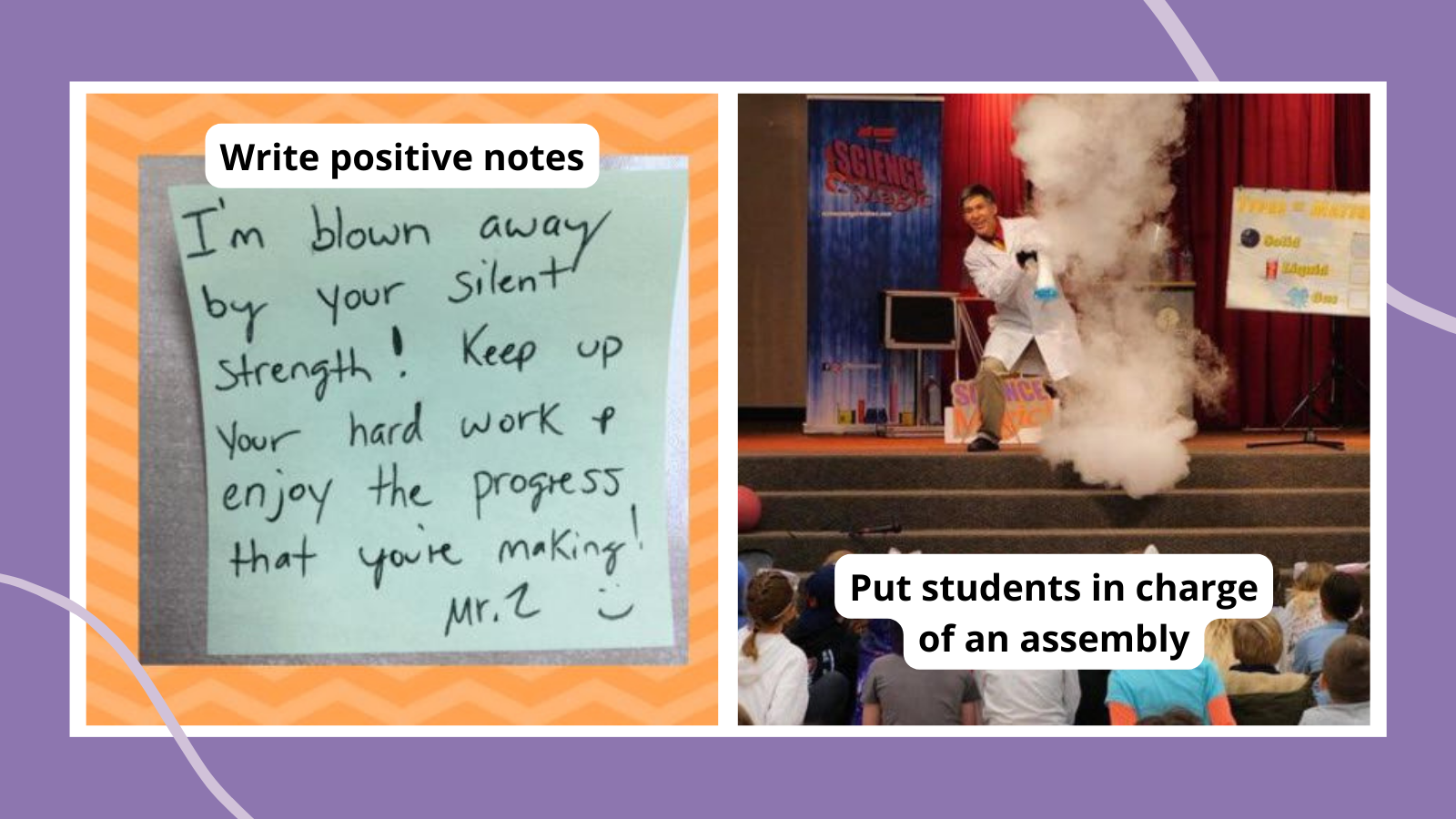
Are you new to teaching fourth grade and looking for inspo? Or have you been doing this for a while and you’re looking for ways to revamp what you’re already doing? We’ve got you! We’ve looked through our WeAreTeachers HELPLINE group on Facebook and the web for some of the best tips for teaching fourth grade. We’ve organized the list by topic to make it easy to cruise for ideas. Let’s do this!
Getting Your Classroom Ready
1. classroom setup.
Need ideas to make sure your classroom is ready for your students? Here’s an excerpt from the book Responsive Classroom: What Every 4th Grade Teacher Needs To Know About Setting Up and Running a Classroom.
2. Try different classroom layouts
Long gone are the days of straight rows of desks lining the classroom. Throw out your seating chart and try one of these ideas instead .
3. Fill your classroom library with these classic fourth grade books
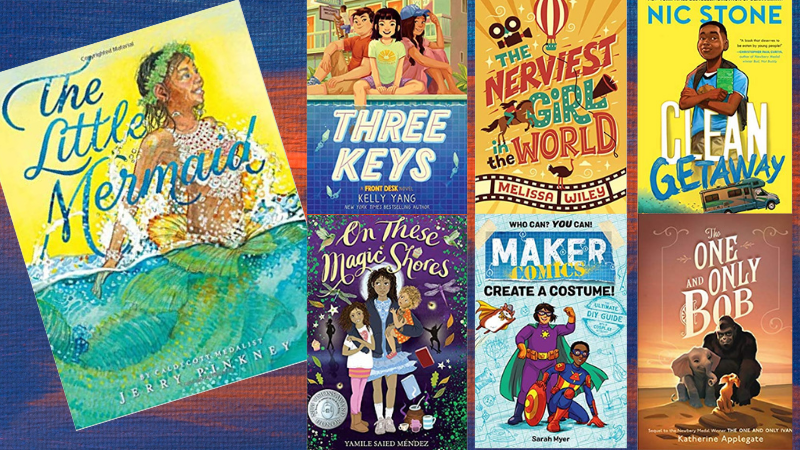
Teaching fourth grade involves a lot of reading! Here is a big list of our favorites.
4. Create interactive bulletin boards

Have you ever heard of or tried interactive bulletin boards? Here’s an article from Brittany Jeltema and her tips for bulletin boards students can use . Plus, here are our favorite interactive bulletin boards for inspiration.
5. Get a jump start on lessons
Teacher planning and prep time are precious! It makes life a lot easier when you can purchase existing lessons, bundles, books, and pages. And why not support other teachers while you do it? Check out our favorite Teacher Pay Teachers sellers for fourth grade.
The First Days of School
6. introduce yourself creatively.
Make day one memorable by introducing yourself in a creative way, such as sending postcards over the summer. Here are our favorite creative teacher introduction ideas .
7. Make “Big Plans”
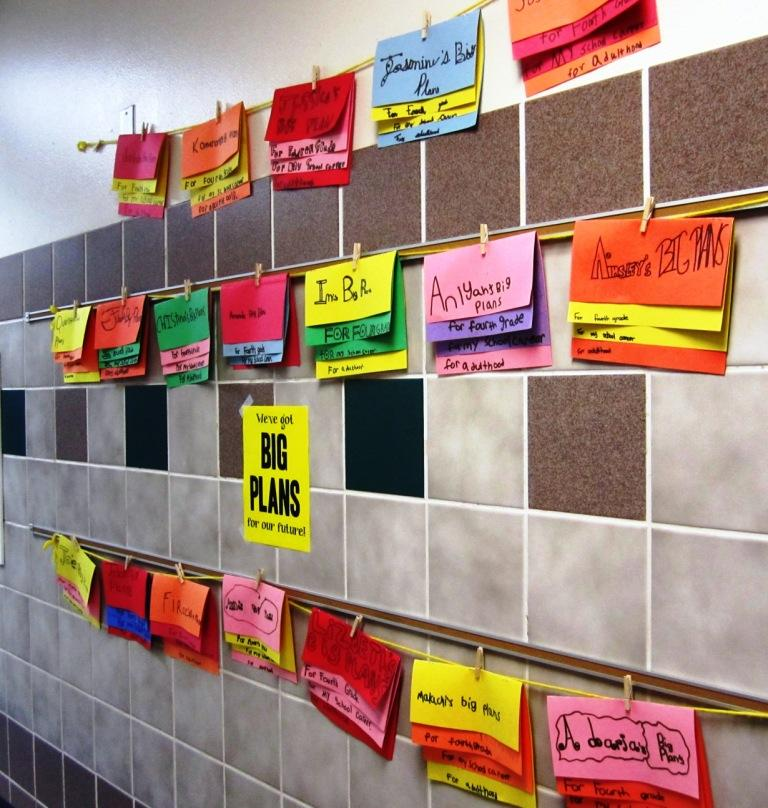
We love this start-of-the-year activity from Write On, Fourth Grade ! Start by reading Big Plans by Bob Shea and Lane Smith. Then on construction paper, have students create their own plans for fourth grade, for their school career, and for adulthood. Hang ’em up and label the wall “Our Big Plans”!
8. Set goals with your students
Have you ever heard the phrase “a goal without a plan is just a wish”? Let’s support our students in turning their wishes into actions with this goal-setting activity.
9. Establish an anti-bullying culture from day one
Download free and kid-centric anti-bullying printables from Kid Pointz to help your students understand the importance of avoiding peer pressure and handling bullies constructively. Plus check out our anti-bullying videos and anti-bullying books to share with your students.
“I also went to the dollar store and got these cute little ‘pledge’ cards that kids can sign at the beginning of the year to pledge that they won’t bully each other and will report bullying when they see it. It’s a great way to start the year!” —Jen B.
10. Establish a culture of kindness

Print these free, downloadable classroom posters to remind your students that kindness matters most of all.
11. Build your students’ social-emotional skills
Teaching fourth grade means building SEL skills. Use these SEL read-alouds to talk about everything from kindness to courage to trying your best.
12. Create classroom jobs for your students
Here are some creative classroom job ideas from our teacher community: tech support, environmental support, organizer, textbook coordinator, sanitation engineer, librarian, substitute, chief in charge, messenger, paper passer, supply clerk, IT technician, human resources officer, administrative assistant, waste management. Plus check out these creative classroom job charts .
13. Encourage students to make new friends and maintain existing friendships
Friendships are important to fourth graders. Help them figure out friendships and form new ones with these friendship videos and books about friendship .
14. Make a class time capsule
At the beginning of the year, have students write down their thoughts, expectations, goals, feelings, and predictions. Put them all in a decorated jar, seal it up, and then read them all in the last week of school.
15. Keep your students linked into the big picture of the lesson
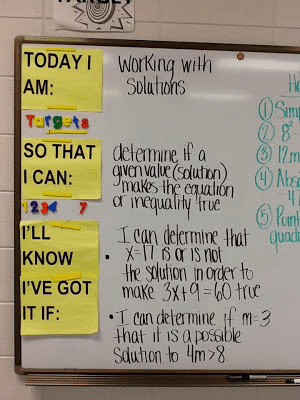
We love this kid-friendly version of a teacher’s lesson plans . Put day-specific “Today I am …,” “So that I can …,” and “I’ll know I’ve got it if …” posters on your board.
16. Get rid of the boring worksheets
Instead, engage your fourth graders with:
- “Thinking maps that students create.” —Aimee V.
- “Brain-based activities and games.” —Joy W. (Check out these fourth grade brain breaks .)
- “Foldables. Check out Dinah Zike for ideas!” —Dianne K.
- “Interactive notebooks!” —Shanna J.
17. Use the walls for anchor charts instead of premade posters
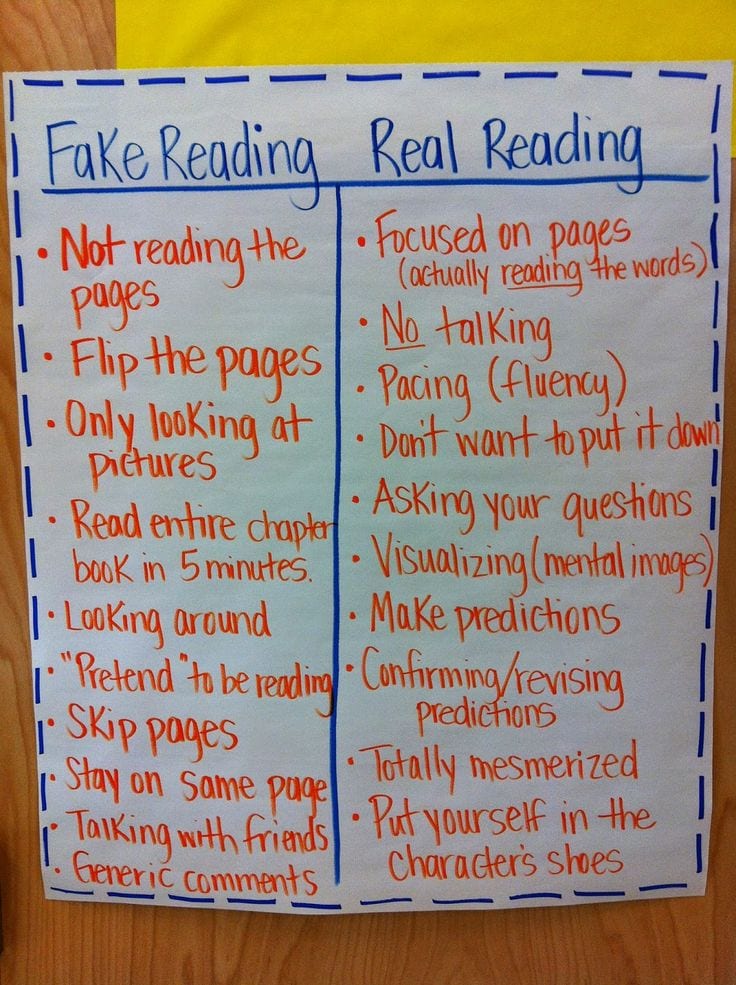
Check out our top fourth grade anchor charts for inspiration.
18. Ground your teaching in ABAR work
Learning for Justice is a website that offers free educational resources for all grade levels in order to engage and focus our learners and ourselves in community, collective action, and social justice. Bookmark this website so you have it all year long.
Ideas for Language Arts
19. incorporate daily writing prompts.
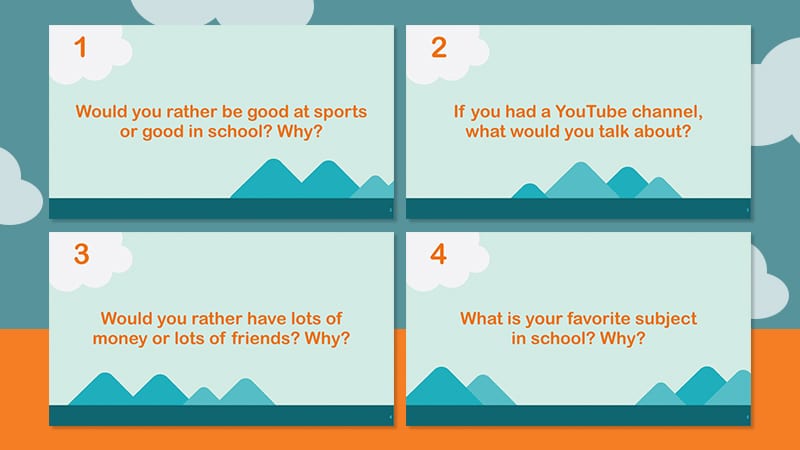
We’ve gathered a big list of fourth grade writing prompts that you can download and use to have your students practice their writing skills.
20. Use paint chips to inspire sensory poetry
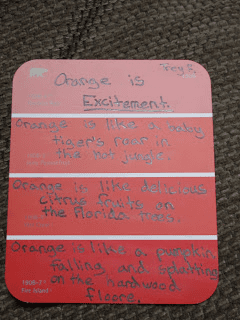
Let color work its inspiration for your fourth grade poets . Check out other educational uses for paint chips here!
21. Teach apostrophe usage with a strong visual
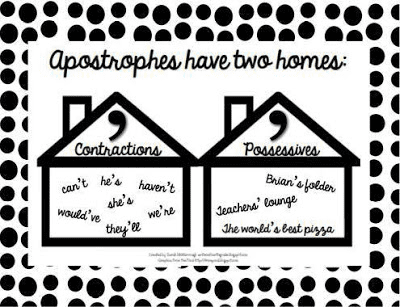
We like this one from Write On, Fourth Grade !
22. Teach the difference between tone and mood with a helpful anchor chart
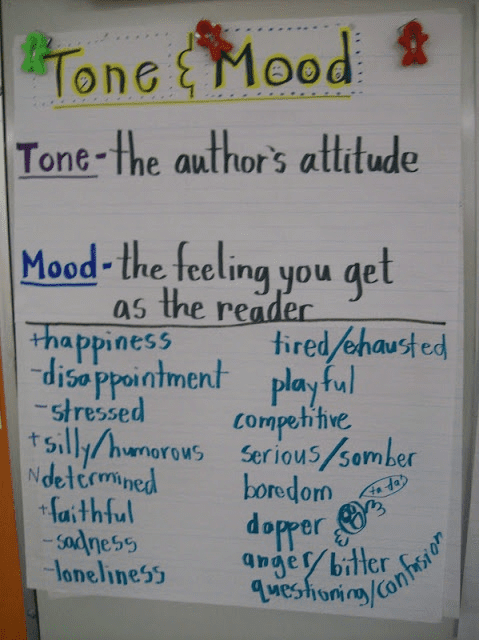
Practice applying the definitions by reading passages in class and asking students to identify the difference between tone and mood in each passage. Check out this helpful tone and mood anchor chart .
23. Teach how to use context clues to bridge into larger close-reading skills
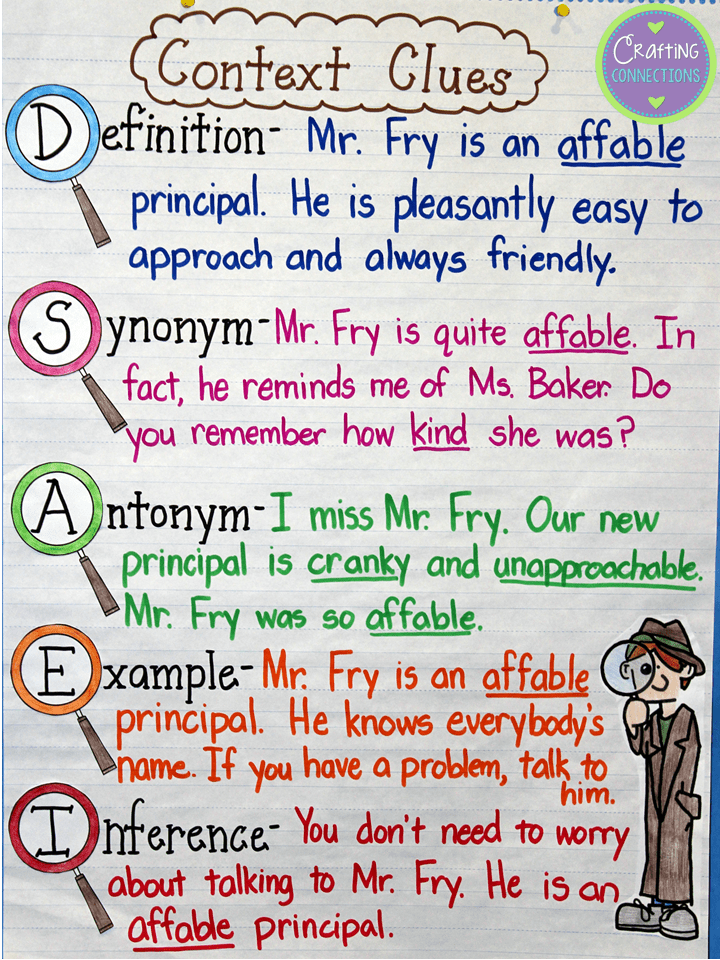
We love this context clues anchor chart .
24. Teach the difference between literal and figurative meanings through writing and drawing
Take sentences from your class’s current text that use figurative language and have students (literally!) illustrate and explain the difference in the literal and figurative meanings of the expressions.
25. Try a vocabulary activity … or 15
Use RAFTs, try Vocabulary Jeopardy, and more with these vocabulary activities .
26. Help fourth graders find just the right word
Speaking of vocabulary, when teaching fourth grade, show students how to grow their vocabulary by spending time finding just the right word for their essay or story. Check out all the options for classroom thesauruses .

Ideas for Math
27. practice math skills with the most mathematical icebreaker ever.
This is a great first-day-of-school activity that doubles as both an icebreaker and a math review of last year’s skills. Students create a poster of math equations representing different aspects of who they are, and then they can get to know each other by solving the problems. Bonus: You’ll have instant wall art for Back-to-School Night! From Fourth Grade Fun in Florida .
28. Focus on fact fluency
Being able to add, subtract, multiply, and divide quickly and accurately will serve your fourth graders well. Spend some time each day practicing math facts with these effective teaching strategies .
29. Reinforce math skills with fun games
Check out all of these fantastic free math card games for fourth graders .
30. Learn about area and perimeter with robots
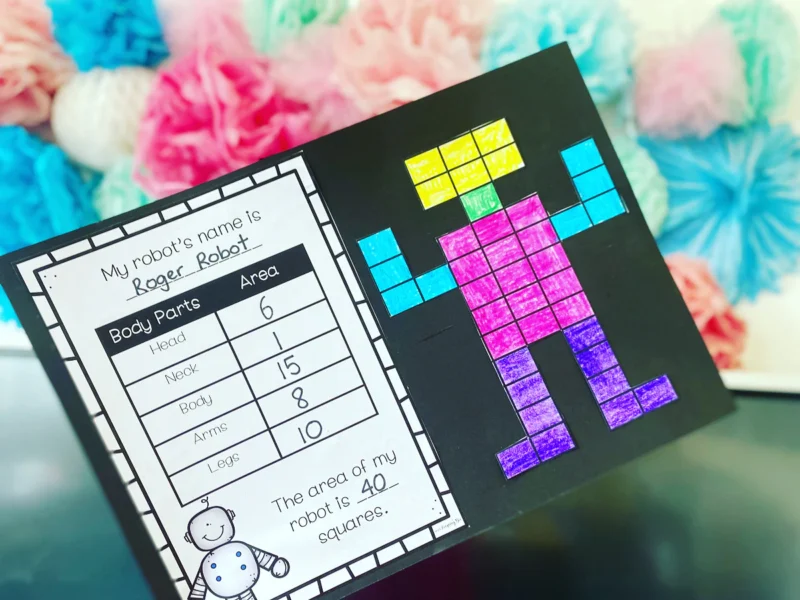
How fun is this robot ? Students apply their understanding of area and perimeter by creating different robots based on mathematical specifications provided to them. Buy a TPT robot lesson of your own.
31. Focus on fractions
If it’s not math fluency, it’s fractions. The better understanding fourth graders have of fractions, the better off they’ll be when the quantities get more complicated or the operations get sophisticated. We really love this pool noodle fractions hack for teaching fourth grade.
32. Teach the dreaded word problem
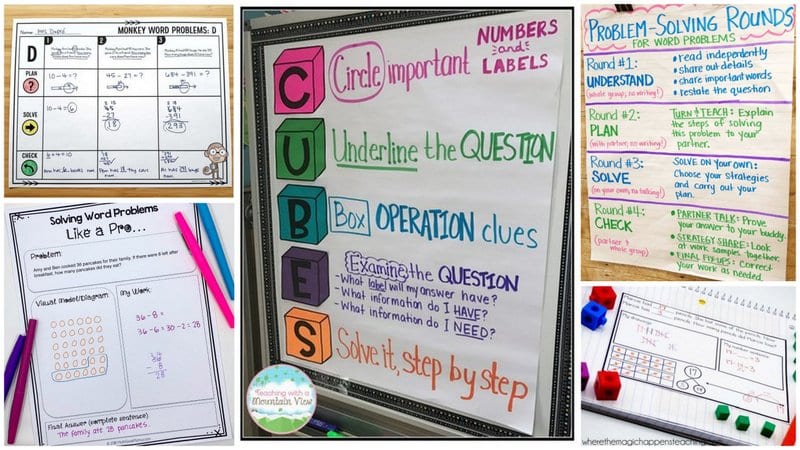
Use these word problem activities and strategies .
Ideas for Science
33. get hands-on with science.
Science is the perfect subject for kids to get down and dirty. Try these fourth grade science projects for inspiration.
34. Try daily STEM challenges
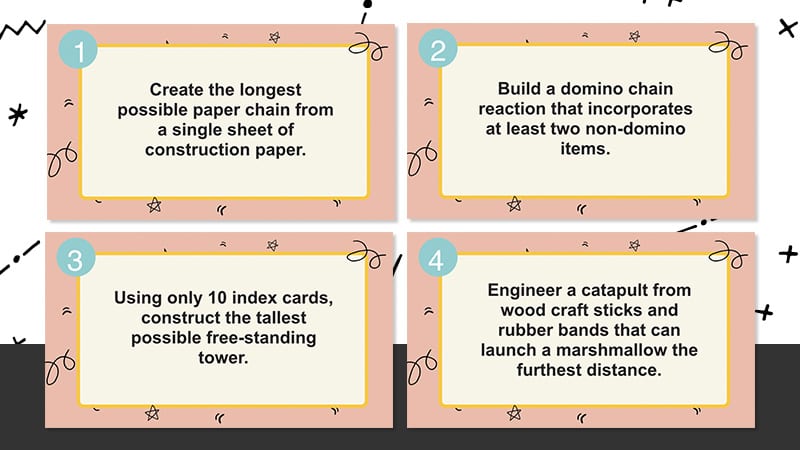
These STEM challenges are designed with your fourth graders in mind. Try one each day or each week to get their minds thinking outside the box.
35. Teach the plant life cycle
Plant life cycle is always a fun science unit. You get to talk about growing, planting, and nature. Plus, students love digging in and getting their hands dirty when they plant seeds themselves. Here are our favorite activities for teaching plant life cycles .
36. Take a deep dive into ecosystems

Learn about specific animals and how climate change, conservation, and people’s decisions impact their lives. The World Wildlife Fund has lessons on animals from polar bears to monarch butterflies.
37. Teach electricity
It’s electrifyingly good fun! Shock them with these electricity science experiments !
38. Explore animal habitats
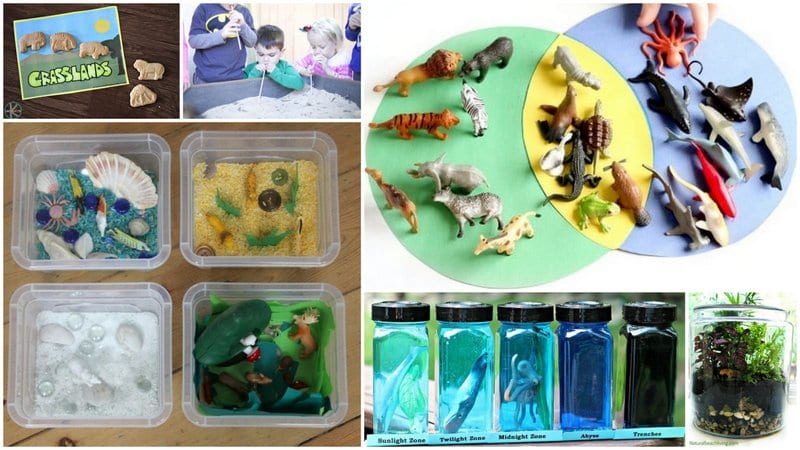
Ready to explore animal habitats around the world, from rain forests to deserts and everything in between? These fun animal habitat activities are just what you’re looking for. Take a walk on the wild side!
Ideas for Social Studies
39. try social studies inquiry circles.
Address the required standards through inquiry-based learning. Here’s an inquiry-based learning how-to guide from the One Stop Teacher Shop. Watch your kids sink their teeth into the “thick versus thin” concept, and the Work Plan Form will help students take control of their own learning.
40. Add social justice books to your library
Here is a list of the Best Social Justice Books for Kids of All Ages ! Reminder: Books don’t have to be brand-new to be valuable. Check out your local library and Facebook groups, or buy used to save some bills.
41. Remind students that “all means all”
Learn about ALL people by including LGBTQ+ inclusive books in your social studies lessons.
42. Learn about heroes
Read biographies about famous people in history. Match books to holidays, like Presidents’ Day or Black History Month.
43. Plan an assembly
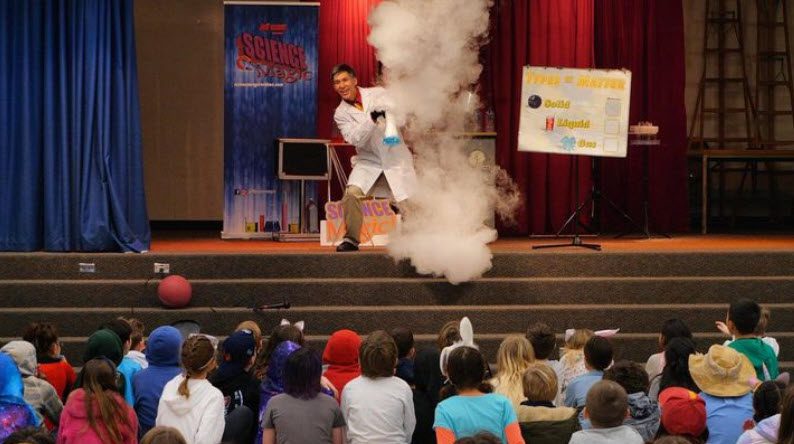
Source: @jeffevansmagic
Teach your fourth graders how to bring a big project together by taking on a school assembly. Plan the assembly from start to finish; here are ideas to get you started.
44. Use online learning
There are some amazing websites out there for teaching social studies lessons. Check out this big list of our favorites .
45. Take a field trip

The independence of 9- and 10-year-olds, coupled with grade-level focus on their state, makes for lots of fantastic options for fourth grade field trips .
Ideas for Classroom Organization
46. check homework three ways.
- “Pick what’s most important about the lesson, not the small details, and grade that way. Don’t worry about spelling or grammar. The important thing is, did they understand the content?” — Megan P.
- “For my gradebook, students receive credit for returning homework completed. I go around and mark them off, then I put the answers up and students correct it themselves. Then I go over any problems that the students request for me to explain.” — Montoya M.
- “I have a box of clothespins with each kid’s name on them. They clip their pin to their homework and drop it into the homework file up front. It’s easy to tell who didn’t hand in homework because you just take a glance at the remaining clothespins! I set a two-minute timer for them to complete this so it doesn’t take too long, and my fourth graders do it in no time! You just have to practice and train them. Make a game out of ‘beating the timer’ without pushing or shoving.” — Jamie S.
47. Set up interactive, exciting centers in your classroom
Having centers, or workstations, in your fourth grade classroom allows students to work independently.
“When introducing a new independent activity, I usually do it in small groups first, so when put in the independent stations, they are able to do it without my help.” — Carol V.
“I have center folders that students keep their work in, and at the end of the cycle of centers, I grade the work as 100, 80, or 60 based upon what’s done and the quality. I give one center grade for each cycle.” — Gary F.
48. Make sure you’re supporting your students with disabilities
It’s likely that some of your fourth graders will have accommodations or modifications that you’re in charge of. One way to make sure you’re providing students with their accommodations is to make a note of which accommodations they need by their name on a discussion or participation tracker . This will help you feel confident that you’re helping each student access learning, and allow you to contribute insights at the IEP meeting.
Ideas for Classroom Management
49. quietly redirect.
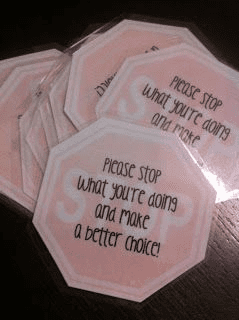
Looking for a way to redirect your students without making it “a thing”? Hand one of these to a student who needs a reminder to focus and you’ll be in the clear. Just be sure to explain the why and how of this activity before you hand out your first one! Here are free printables from Rock and Teach , or make a more discrete design yourself on PowerPoint, Google Slides, or with just paper and a Sharpie.
50. Establish classroom community in the first days of school with heart maps
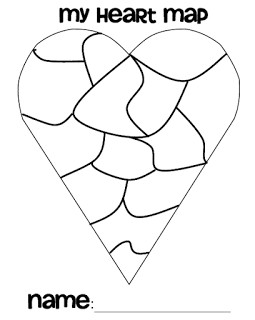
When teaching fourth grade, you can show your students how to express what matters most to them by illustrating and writing in these heart maps. Download a free template from Fourth Grade Lemonade .
51. Affirm your students daily
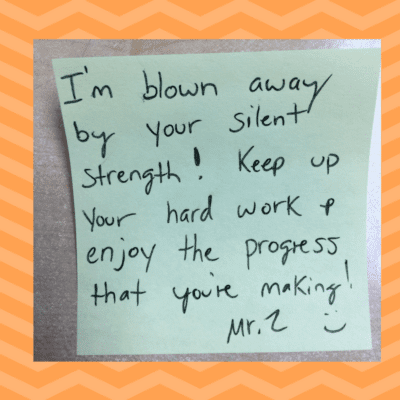
We love this idea of leaving positive sticky notes for kids every day to encourage them and let them know you’re behind them 100%!
52. Teach executive functioning
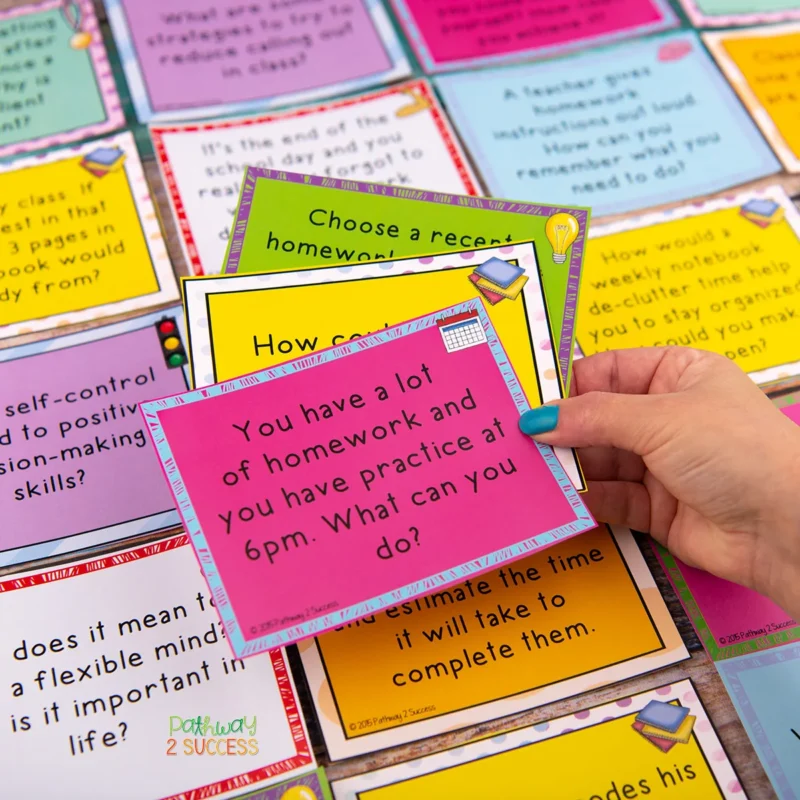
Fourth graders are at the start of learning to do things independently, like really independently. Support students’ executive functioning skills, those skills that will help them manage classwork and organization throughout their lives, starting now. Check out the executive functioning skills that kids should learn in elementary school and how to teach executive functioning . Also, learn what it feels like to struggle with executive functioning in fourth grade .
53. Accept job applications
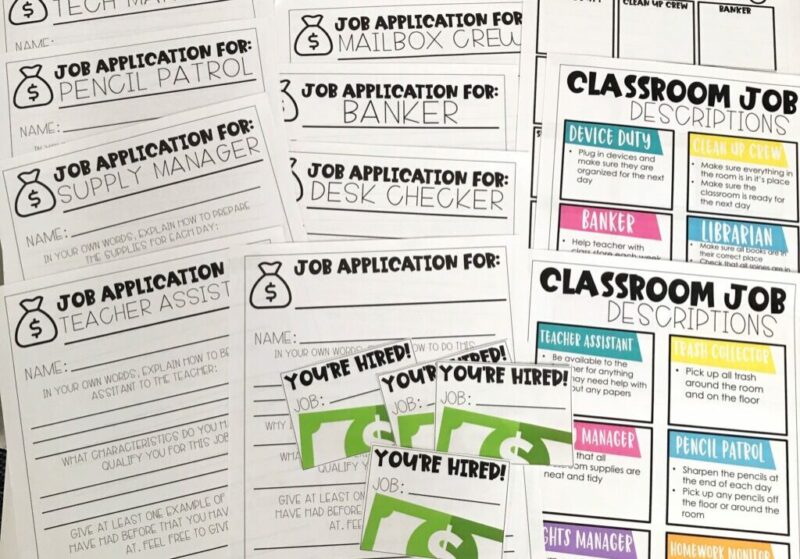
Try this classroom job board idea from Teach Create Motivate . Roll out classroom jobs, or add new ones by posting a job board and having students apply for jobs. Students will get important practice in writing skills and managing the feelings around getting or not getting the job they want.
Other Ideas
54. have a sense of humor.
Teaching fourth grade requires a sense of humor, both for yourself and your students. Poetry from Shel Silverstein and Jack Prelutsky hit right at fourth graders’ funny bones. Or try one of our fourth grade jokes to start the day .
55. Build positive relationships with parents
Here are 10 tips to make working with parents the easiest part of your job.
What are your top tips for teaching fourth grade? Come share in our WeAreTeachers HELPLINE group on Facebook!
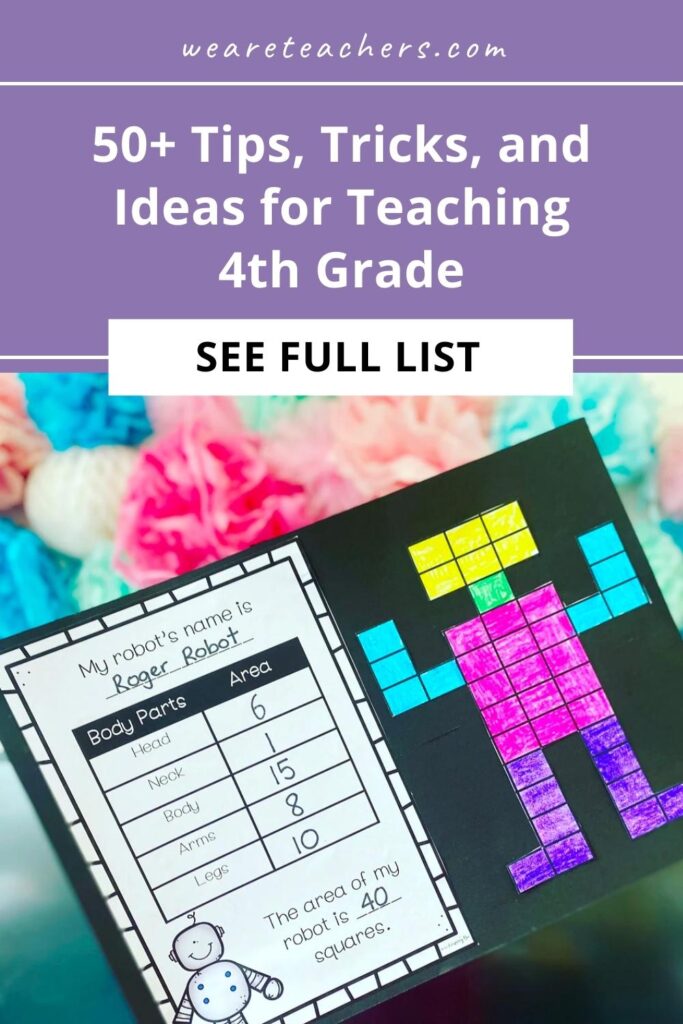
You Might Also Like

Throw Out Your Seating Chart and Try One of These 7 Ideas Instead
Innovative ways to redesign your classroom. Continue Reading
Copyright © 2023. All rights reserved. 5335 Gate Parkway, Jacksonville, FL 32256
- Our Mission
5 Ways to Increase Students’ Engagement in Writing
Upper elementary teachers can make small shifts in how they teach writing to spark students’ interest and promote critical thinking.

After a few years of teaching, I started to grow tired of following scripted curriculum to a T. Sure, there are benefits. Children thrive on structure, and it can serve as a tool for teachers, especially those who are just beginning to develop their craft. But if I had to say, “Yesterday we learned… Now watch me as I…” one more time, well, you get the picture.
I was bored—and if I was bored, you bet my students must have been. But out of this boredom (and thanks to the support of my literacy specialist) five strategies blossomed that breathed new life into my teaching.
1. The Grapple
This is a type of instructional strategy I developed after being inspired by our math curriculum, which starts with an element called the “anchor task.” In her article “ Anchor Task: What? Why? How? ” Amy Bilek explains that an “anchor task is a problem given to students at the beginning of a math block that provides an opportunity to activate prior knowledge, requires students to collaborate and ask questions of each other, and promotes an environment for students to productively struggle and persevere in problem-solving” while still working in the zone of proximal development.
I thought it would be interesting to try this out in writing. The Grapple features a short inquiry or guided practice in the beginning of the lesson. For example, a teacher might post a paragraph of student writing and ask a broad question such as, “What good choices did this author make? Turn and talk.” Marian Small, author and international professional development consultant, may refer to this type of inquiry as “ open questions ” because one question can meet the needs of a broad range of learners, since the question is not too narrow. After turning and talking, students can share what they noticed. The teacher then calls on several students until one of them mentions the strategy of the day.
Students feel empowered when they’ve determined the learning target/objective of the lesson before teaching has even begun. This also gives student writers an opportunity to notice multiple strong writing choices. Jo Boaler (professor at Stanford University and author of Limitless Mind ) might talk about these as “low-floor, high-ceiling tasks.” Low floor refers to accessibility for students needing improvement in the class, whereas high ceiling reaches the most advanced learners who can continue to find challenges. This concept encourages students to be actively engaged while leading their own learning.
2. Student-Created Anchor Charts
After participating in a Grapple, students are tasked with trying the strategy of the day in their own writing. I then make an anchor chart naming the strategy with examples of student work. For example, my anchor chart might say, “I can elaborate by adding feelings, action, and dialogue.” I would then attach our mentor text’s example and student examples where feelings, action, and dialogue were added. This would give students motivation to try out the strategy in hopes of being featured on our anchor chart.
Students who were featured felt proud and successful (eventually, all writers are featured at some point throughout the year). Other students referred to these charts as tools in order to help them improve their writing. Were these anchor charts always beautiful and Pinterest worthy? No. But they were authentic and purposeful. Another benefit is that anchor charts support students to develop a mindset of celebrating each other’s successes.
3. Free Writing Time
Free writing time gives students space to let their creative ideas flourish and see themselves as writers. I give my students 5 minutes of free writing time each day. I like to do this after lunch, when students can benefit from a quiet activity to help regulate themselves back into an academic setting. On Fridays, we participate in an Author’s Share time (about 20–30 minutes), when student authors can sign up for a slot to share their writing with the whole class as an audience. Since initiating this, I’ve had more avid writers than ever before.
4. Oral Brainstorming
Oral brainstorming helps build class community. Regardless of the genre, students can share about themselves or a variety of other topics with their peers and teacher. For example, when brainstorming narrative story ideas, students might share using the prompt, “I remember one time...” While brainstorming opinion writing, students might share with the prompt, “Something I love is...” Or, in nonfiction writing, students might share with the prompt, “Something I know a lot about is...” If you’re having trouble fitting this into your writing block, try incorporating these prompts into a morning meeting.
Research proves that oral planning is key to the writing process. Language arts methods books urge prospective teachers to develop children’s writing ability by building upon their proficiency in oral language. These texts often describe early writing as “ talk written down .” Experts acknowledge that writing begins as speech written down. Although this research dates back to 1983, it’s still relevant today.
5. Write an Authentic Teacher Mentor Text
When teachers are vulnerable and share their own writing with students, it pays off. During our narrative writing unit in the beginning of the year, I share my own fourth-grade experience. I write, edit, and revise the story of the time I got called down to the principal’s office. My fourth-grade students connect with this story, become excited about writing, learn a lesson, and see me not only as their teacher but also as a human being and a writer (from whom they are now more willing to accept feedback). By sharing our stories, we share parts of our identity with our students. Doing so creates an environment where they can feel comfortable to do the same with us.
The good news is that these strategies can be incorporated into existing lessons, by making small shifts. They not only help writers improve their craft but also increase engagement. I hope that if you try these small shifts, you will see positive results.
Free Printable Writing Worksheets for 4th Grade
Discover a vast collection of free printable Reading & Writing worksheets tailored for Grade 4 students, created by Quizizz to enhance their literacy skills and spark their creativity.

Recommended Topics for you
- Genre Writing
- Fiction Writing
- Nonfiction Writing
- Writing Organization and Structure
- Research Strategies
- Writing Process
- Handwriting
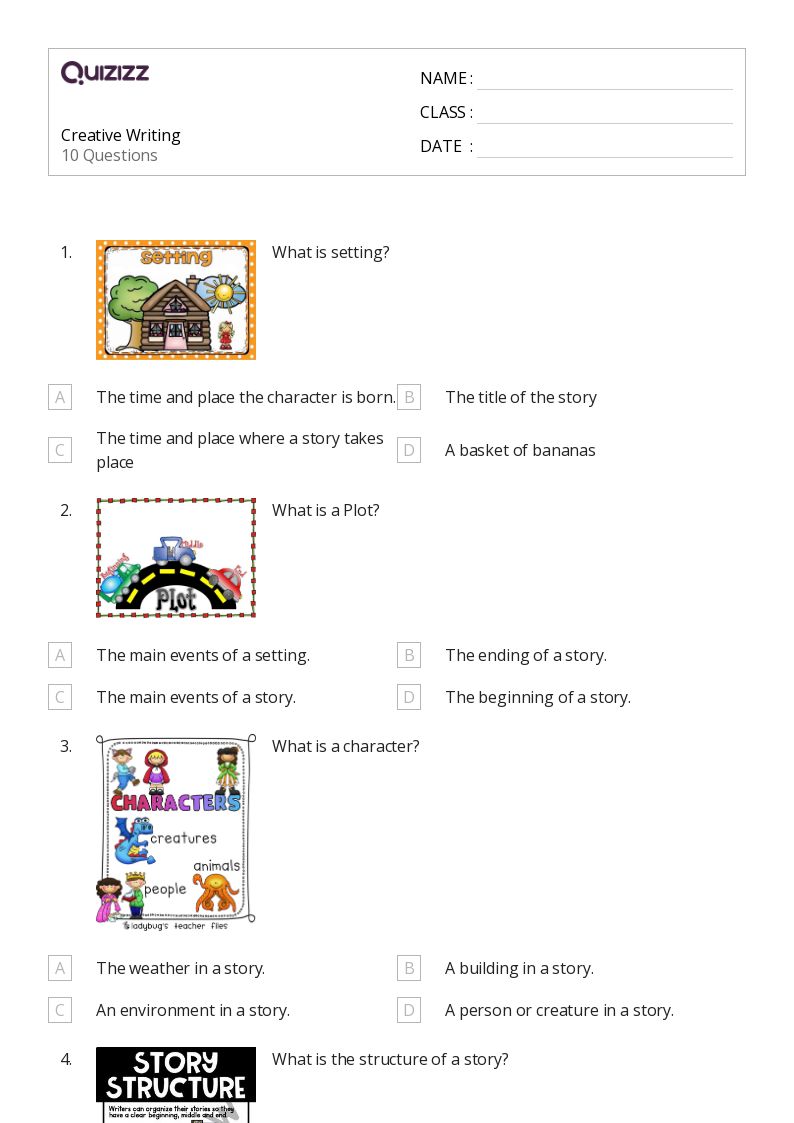
Explore Writing Worksheets by Grades
- kindergarten
Explore Writing Worksheets for grade 4 by Topic
Explore other subject worksheets for grade 4.
- Social studies
- Social emotional
- Foreign language
- Reading & Writing
Explore printable Writing worksheets for 4th Grade
Writing worksheets for Grade 4 are essential tools for teachers to help their students develop and improve their reading and writing skills. These worksheets cover a wide range of topics, including grammar, punctuation, sentence structure, and vocabulary, ensuring that students have a strong foundation in language arts. As a teacher, you know the importance of providing engaging and challenging activities for your students, and these Grade 4 writing worksheets are designed to do just that. With a variety of exercises and formats, such as fill-in-the-blanks, multiple-choice questions, and creative writing prompts, students will be motivated to practice and apply their newfound skills. So, if you're looking for effective and engaging resources to enhance your students' reading and writing abilities, look no further than these Grade 4 writing worksheets.
Quizizz is an excellent platform that not only offers writing worksheets for Grade 4 but also provides a plethora of other resources to help teachers create engaging and interactive learning experiences for their students. With Quizizz, you can access a vast library of pre-made quizzes, polls, and flashcards, or create your own customized content to meet the specific needs of your students. The platform also allows you to track your students' progress, giving you valuable insights into their strengths and areas for improvement. In addition to reading and writing resources, Quizizz offers materials for various subjects, such as math, science, and social studies, making it a one-stop-shop for all your teaching needs. So, if you're a teacher looking to enhance your students' learning experience, give Quizizz a try and discover the benefits of using this versatile platform alongside your Grade 4 writing worksheets.
- Math for Kids
- Parenting Resources
- ELA for Kids
- Teaching Resources

How to Teach Skip Counting to Kids in 9 Easy Steps
10 Best Math Intervention Strategies for Struggling Students
How to Teach Division to Kids in 11 Easy Steps
How to Teach Place Value in 9 Easy Steps
8 Math Division Tricks: Making Division Fun & Accessible
Simple & Stress-Free After School Schedule for Kids of All Ages
When Do Kids Start Preschool: Age & Readiness Skills
Kindergarten Readiness Checklist: A Guide for Parents
How to Choose Best School For Your Kid: 12 Best Tips
Why Kids Get Bored at School: 10 Tips to Keep Them Interested
6 Effective Ways to Improve Writing Skills
40 Four Letter Words That Start With A
What Are the Stages of Spelling Development: Ultimate Guide
48 Rhyming Words for Kindergarten Kids
How to Teach Vowels to Kids: A Step-by-Step Guide
15 Best Innovative Tech Tools for Teachers
What is Teachers Professional Development: Strategies & More
11 Best Ways to Create a Positive Learning Environment for Kids
How to Encourage Creativity in the Classroom – 9 Best Tips
25 Best Websites for Teachers
How to teach 4th Grade Kids: 25 Best Tricks & Tips
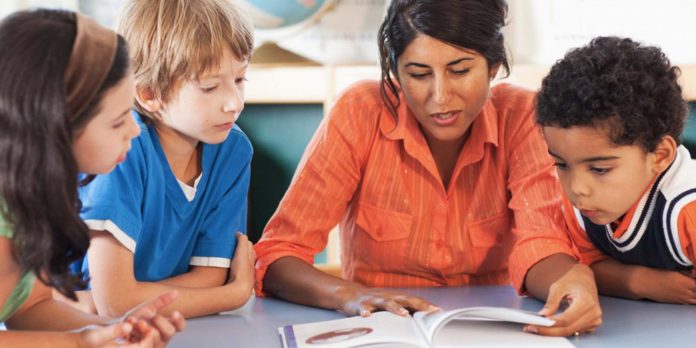
5 Tips to Teach 4th Grade Math
5 tips to teach 4th grade language arts, 5 tips to teach 4th grade science, 10 general tips to teach 4th grade kids.
Teaching 4th grade presents its own set of unique challenges and rewards. As someone who has been in the trenches of 4th-grade classrooms, I’ve gathered firsthand experience in how to teach 4th grade . This age is a critical point in a child’s education, where they transition from concrete learning to more abstract thinking. They’re more curious and independent yet still need significant guidance and support.
SplashLearn: Most Comprehensive Learning Program for PreK-5

SplashLearn inspires lifelong curiosity with its game-based PreK-5 learning program loved by over 40 million children. With over 4,000 fun games and activities, it’s the perfect balance of learning and play for your little one.
Adapting our teaching methods to meet the needs of 4th graders is essential. This stage is vital for reinforcing foundational skills and introducing new academic concepts. In this blog, I’ll share insights and strategies from my experience to guide you in effectively teaching this vibrant and diverse group of students.
1. Incorporate Story Problems
Story problems are a key tool as they help students apply mathematical concepts to real-life scenarios. This enhances their problem-solving skills and makes math more relevant and engaging for them.
- Create scenarios involving grocery shopping to teach budgeting and subtraction .
- Use sports statistics to introduce concepts of averages and simple statistics.
Encourage students to write their story problems based on classroom topics or personal interests.
Start with these word problem games :

2. Start with Concrete Examples

Using concrete examples is crucial for building a solid foundation. At this age, students transition from concrete operational thinking to more abstract concepts. Starting with tangible examples makes this transition smoother.
- Use physical objects like blocks to demonstrate multiplication or division .
- Draw shapes to teach geometry , allowing students to visualize angles and sides .
- Utilize measuring tapes or rulers in class to connect math with real-world dimensions.
3. Focus on Understanding, Not Just Memorization
Understanding the rationale behind mathematical processes is crucial for 4th graders. It helps them grasp concepts deeply rather than memorizing steps, leading to better problem-solving skills and a stronger mathematical foundation.
- Break down time tables to show the repeated addition concept.
- Use visual aids like number lines for addition and subtraction.
- Explain fractions using real-life examples like slicing a pizza.
4. Use Technology and Interactive Tools
In today’s digital age, the traditional chalk-and-talk method of teaching math is evolving. For 4th graders, whose attention spans and learning preferences vary widely, the use of technology and interactive math tools can significantly enhance their learning experience.
SplashLearn offers a blend of fun and education that is both engaging and effective. It turns math problems into interactive games . This approach resonates with 4th graders, who often find traditional math problems daunting or boring. By gamifying the learning process, SplashLearn ensures that children are engaged and motivated to learn more.
SplashLearn caters to a range of learning styles , ensuring that whether a student prefers hands-on activities, visual aids, or auditory instructions, there’s something for everyone.
Teachers can use SplashLearn to track the progress of their students. This feature helps in identifying areas where a student might be struggling, allowing for a more personalized teaching approach.
5. Introduce Step-by-Step Problem Solving
How to teach 4th grade math effectively involves guiding students through step-by-step problem-solving. This methodical approach helps them understand each part of a problem, fostering a deeper comprehension of mathematical processes.
- To solve a long division problem, break it down into smaller, manageable steps and go through each step slowly.
- Use a problem-solving framework, like ‘Read, Question, Solve, and Check’, to structure their approach to math problems .
- Encourage them to write out each step when solving a problem, which can help identify where they struggle and need more practice.
1. Introduce Literary Analysis
At the 4th grade level, introducing basic literary analysis helps students delve deeper into texts, encouraging critical thinking and a better appreciation of literature. This involves examining elements like plot, characters, and setting, and understanding how they contribute to the story’s overall impact.
- Discuss the motives and actions of characters in a story and how they affect the plot.
- Analyze the setting of a story and its influence on the narrative.
- Encourage students to identify themes and messages in stories and relate them to their own experiences.
Begin introducing these literary analysis games for 4th grade kids:

2. Enhance Writing Skills
Developing writing skills is a key aspect of how to teach 4th grade language arts . Students should learn to express their thoughts clearly and coherently. This skill is not only important for academic success but also for effective communication in general.
- Regular practice with different types of writing: narrative, descriptive, persuasive.
- Teach the basics of structuring an essay – introduction, body, and conclusion.
- Use writing prompts to stimulate creativity and expression.
Here are some writing worksheets to enhance your 4th graders writing skills:

3. Expand Vocabulary and Grammar
A strong vocabulary and a good grasp of grammar are essential for 4th graders. It aids in both reading comprehension and effective writing.
- Introduce new words weekly and use them in various contexts.
- Engage in fun activities like word games or crossword puzzles .
- Incorporate grammar lessons into writing exercises.
Expand vocabulary with these festive-themed vocabulary worksheets :

4. Incorporate Listening and Speaking Activities
Listening and speaking are critical components of language arts. They enhance comprehension and communication skills, preparing students for more advanced interactions.
- Organize group discussions on various topics.
- Conduct read-aloud sessions where students take turns reading.
- Implement storytelling activities where students narrate stories or experiences.
5. Focus on Comprehensive Reading
In 4th grade, shifting focus to comprehensive reading is vital. It’s the stage where students transition from learning to reading to reading to learning. This skill is crucial for understanding more complex texts and concepts they will encounter in higher grades.
- Use a variety of texts ( stories , poems , informational texts) to broaden exposure.
- Discuss the main ideas, themes, and characters in each reading session.
- Encourage students to ask questions and share their interpretations.
Begin with thes printable worksheets to enhance comprehension skills :

1. Integrate Science with Daily Life
In teaching 4th-grade science, connecting scientific concepts with everyday life is effective. This approach helps students understand the relevance and application of science in their surroundings, making it more engaging and memorable.
- Discuss weather patterns by relating them to seasonal changes they observe.
- Explore ecosystems by examining local plants and animals.
- Study simple machines through objects they use daily, like scissors (levers) or bicycles (wheels and axles).
2. Focus on Observation and Data Collection
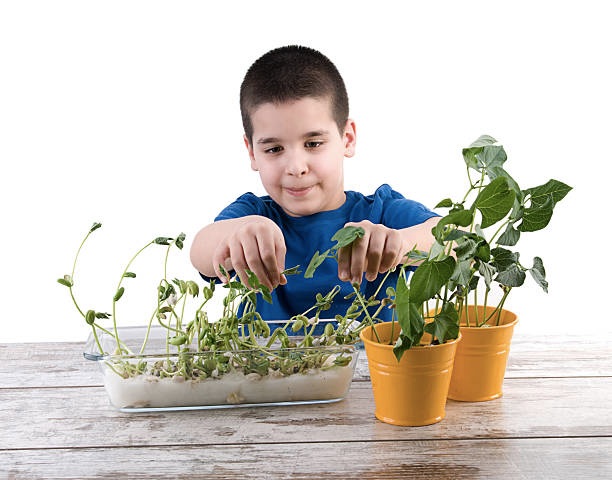
Teaching science to 4th graders should emphasize observation and data collection. This age is ideal for nurturing these foundational scientific skills, as students are naturally curious and detail-oriented.
- Nature walks to observe and document different types of plants and insects.
- Simple experiments where they measure and record temperatures or growth of plants.
- Projects involving the collection and analysis of data, like a rainfall chart.
3. Use Age-Appropriate Scientific Explanations
Providing scientific explanations that are appropriate for 4th graders’ understanding is essential. Complex concepts should be broken down into simpler terms, using analogies and examples they can easily relate to.
- Explain the concept of evaporation and condensation through the water cycle.
- Use baking soda and vinegar reactions to demonstrate chemical changes.
- Describe the solar system with models or drawings to simplify spatial concepts.
4. Introduce Basic Scientific Vocabulary
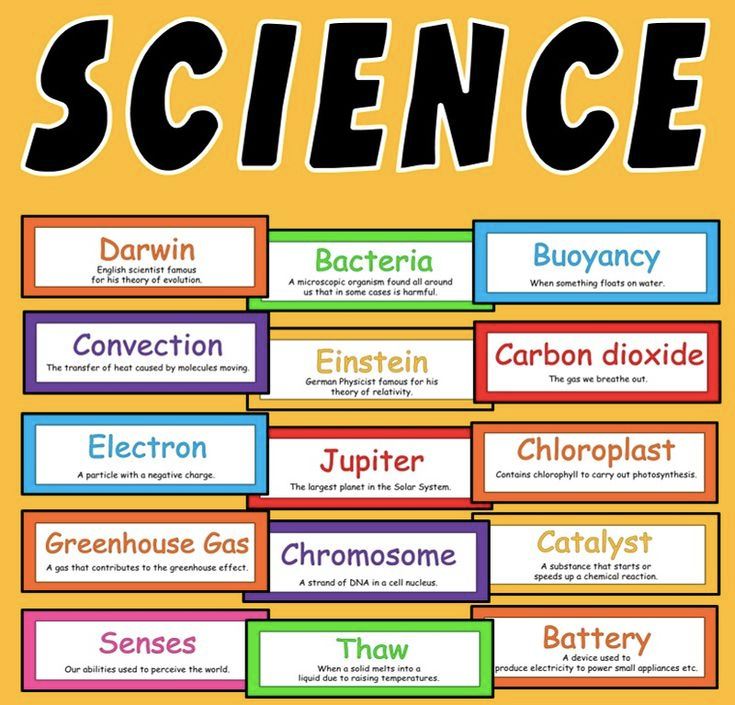
Introducing and consistently using basic scientific vocabulary prepares 4th graders for more advanced studies. It’s important to teach these terms in context so that students can fully grasp their meanings and applications.
- Teach terms like ‘habitat’, ‘precipitation’, and ‘photosynthesis’ in relevant lessons.
- Use vocabulary flashcards or word banks to reinforce new terms.
- Encourage students to use scientific terms in their observations and reports.
5. Encourage Scientific Questions and Curiosity

Fostering a sense of wonder and curiosity about the natural world is a key tip for 4th graders. When students are encouraged to ask questions and explore their interests, they develop a deeper appreciation for science.
- Have a “question of the day” related to the science topic being studied.
- Allow students to conduct simple research on a science question of their choice.
- Organize a science fair where students can present findings on a scientific inquiry.
1. Establish Clear Communication
Clear communication tops the list when considering how to teach 4th grade. Fourth graders are developing better language skills and understanding. It’s crucial to use clear, concise instructions and check for understanding. This can be done through simple questioning techniques or quick activities that assess their grasp of the instructions.
2. Encourage Independent Learning
Teaching fourth graders means encouraging them to take more responsibility for their learning. Introduce tasks that require them to work independently, like reading assignments or simple research projects. This boosts their confidence and prepares them for more complex tasks in higher grades.
3. Incorporate Technology Mindfully
At this stage, integrating technology can greatly enhance learning. Use educational apps and interactive online resources that align with your lesson plans . However, balancing screen time with traditional learning methods is important, ensuring a well-rounded educational experience.
4. Focus on Critical Thinking
Developing critical thinking skills is essential. Present them with problems that require analysis and decision-making. Group discussions, debates, or problem-solving tasks can be very effective. This approach teaches them to think independently and express their thoughts clearly.
5. Implementing Collaborative Learning
Group work is key. It helps them develop social skills and learn how to work collaboratively. Projects where they need to work in teams teach them about cooperation, listening to different perspectives, and conflict resolution.
6. Adapt to Different Learning Styles
Every child learns differently. Some may prefer visual aids, while others learn better through auditory or hands-on activities. It’s important to vary your teaching methods to cater to these different styles, making learning more effective and inclusive.
7. Set and Review Goals Regularly
Goal setting is crucial at this stage. Work with your students to set achievable academic and personal goals. Regularly review these goals to track progress and make adjustments. This practice teaches them the value of setting objectives and working towards them, a skill that will benefit them beyond the classroom.
8. Promote Self-Assessment and Reflection
Evaluate 4th graders work is essential for their growth. Encourage them to reflect on their assignments and identify their strengths and areas for improvement. This practice fosters self-awareness and helps them become more responsible and independent learners. Regular reflection sessions can be incorporated after completing significant tasks or projects.
9. Promote Emotional and Social Growth
Emotional and social development is as important as academic growth. Encourage activities that promote empathy, respect, and self-awareness. Discussing feelings, group dynamics, and personal challenges openly in class can create a supportive learning environment.
10. Enhance Problem-Solving Skills
Problem-solving is a critical skill for 4th graders. Incorporate puzzles, logical games, and real-life scenarios that challenge them to think and find solutions. This sharpens their reasoning abilities and prepares them for complex subjects they’ll encounter. Encouraging them to explain their thought process helps in deepening their understanding.
As we wrap up this blog on teaching tips for 4th graders, remember teaching 4th grade is all about patience, creativity, and understanding each child’s unique way of learning. Keep your lessons engaging and relevant, and don’t forget to have fun. After all, when you enjoy teaching, your students will likely enjoy learning!
Frequently Asked Questions (FAQs)
What makes a good 4th grade teacher.
A good 4th grade teacher is patient, creative, and adaptable, with a strong understanding of the developmental needs of this age group. They should be skilled in making learning engaging and accessible, while fostering a supportive and inclusive classroom environment.
What are the activities for Grade 4?
Activities for Grade 4 include hands-on science experiments , interactive math games , creative writing exercises, group projects, and multimedia learning tools. These activities are designed to enhance critical thinking, problem-solving, and collaborative skills.
What are the lessons in Grade 4?
Lessons in Grade 4 typically cover more advanced math concepts like multiplication and division, comprehensive language arts including reading and writing , basic sciences such as biology and physical science, social studies focusing on history and geography, and introductory technology and computer skills.
Most Popular

15 Best Report Card Comments Samples

101 Best Riddles for Kids (With Explanation)

40 Best Good Vibes Quotes to Brighten Your Day
Recent posts.

15 Best Listening Activities for Kids to Enhance Auditory Skills
Math & ela | prek to grade 5, kids see fun., you see real learning outcomes..
Watch your kids fall in love with math & reading through our scientifically designed curriculum.
Parents, try for free Teachers, use for free

- Games for Kids
- Worksheets for Kids
- Math Worksheets
- ELA Worksheets
- Math Vocabulary
- Number Games
- Addition Games
- Subtraction Games
- Multiplication Games
- Division Games
- Addition Worksheets
- Subtraction Worksheets
- Multiplication Worksheets
- Division Worksheets
- Times Tables Worksheets
- Reading Games
- Writing Games
- Phonics Games
- Sight Words Games
- Letter Tracing Games
- Reading Worksheets
- Writing Worksheets
- Phonics Worksheets
- Sight Words Worksheets
- Letter Tracing Worksheets
- Prime Number
- Order of Operations
- Long multiplication
- Place value
- Parallelogram
- SplashLearn Success Stories
- SplashLearn Apps
- [email protected]
© Copyright - SplashLearn

Make learning a game for your students
Unlock endless learning fun with 14,000+ games & activities, 450+ lesson plans, and more—free forever.
Teachers, Use for Free

Informational Writing Prompts 4th Grade: Explore Informative Writing
My name is Debbie, and I am passionate about developing a love for the written word and planting a seed that will grow into a powerful voice that can inspire many.

Introducing Informational Writing Prompts for 4th Grade: Engage Young Minds in Informative Writing
Key features of our informational writing prompts:, building strong foundations: understanding the purpose and structure of informational writing, encouraging curiosity: selecting engaging topics for 4th grade informative writing prompts, unleashing creativity: exploring different types and styles of informational writing in 4th grade, mastering the art of research: teaching effective research skills for informative writing, 1. define your research objectives, 2. explore a variety of sources, crafting a captivating introduction: techniques to grab readers’ attention in 4th grade informational writing, providing supporting evidence: teaching strategies for compiling and incorporating information in 4th grade informative writing, polishing the final draft: revision and editing tips for 4th grade informative writing, frequently asked questions, to conclude, introduction to our 4th grade informational writing prompts.
Welcome to a world of curiosity and knowledge! Engaging young minds in informative writing has never been more exciting with our specially crafted informational writing prompts for 4th graders. Designed to ignite creativity and foster critical thinking, these prompts are sure to captivate your students as they delve into the art of informative writing.
Our thoughtfully curated collection of writing prompts covers a diverse range of subjects, enabling young learners to explore and analyze various topics. From the wonders of nature to historical events and even scientific discoveries, these prompts are designed to encourage students to delve deep into research, gather facts, and present their findings in a concise and compelling manner.
What sets our prompts apart is their ability to engage students by offering real-world connections, stimulating their natural curiosity, and encouraging them to ask questions. By promoting investigative skills, organizing thoughts, and fostering a sense of discovery, our prompts provide an excellent platform for students to develop their writing skills while expanding their knowledge base.
- Variety: Our prompts cover a broad spectrum of subjects, catering to different interests and sparking students’ fascination for learning.
- Research-Based: Each topic encourages students to conduct thorough research, empowering them to become independent learners and critical thinkers.
- Real-World Connections: By presenting topics relevant to everyday life, we help students understand the significance of informative writing in the world around them.
- Promotes Organization: Our prompts guide students to structure their thoughts and ideas cohesively, teaching them the importance of clear and logical presentation.
- Encourages Creativity: While informative, our prompts also invite students to infuse their unique voice and creativity into their writing, making the process engaging and enjoyable.
With our 4th grade informational writing prompts, we aim to fuel a passion for writing and foster a love for knowledge in young minds. Prepare for an inspiring journey where students uncover the wonders of the world while honing their writing skills one prompt at a time. Get ready to dive into the realm of informative writing and watch as your students’ minds expand!

Informational writing serves a crucial role in our daily lives, providing us with knowledge and guidance on a wide range of topics. Whether you’re reading a news article, a scientific report, or an instructional manual, understanding the purpose and structure of informational writing is essential. By grasping the fundamentals, you’ll not only enhance your comprehension but also be able to communicate effectively in your own writing endeavors.
The purpose of informational writing is to present factual information in a clear and organized manner. It strives to educate and inform readers about a specific subject, providing them with valuable details, explanations, and insights. Unlike persuasive or narrative writing, informational writing focuses solely on delivering facts and does not aim to sway emotions or tell a story. Therefore, it is crucial to maintain a neutral tone throughout the piece, ensuring objectivity and credibility.
- Structure: Informational writing typically follows a logical structure that aids readers in easily navigating through the content. It consists of an introduction, body paragraphs, and a conclusion.
- Introduction: The introduction serves as a brief overview, capturing the reader’s attention by stating the topic and its significance. It often includes a thesis statement that outlines the main points that will be discussed in the body paragraphs.
- Body paragraphs: In the body paragraphs, each main point is elaborated upon in a separate paragraph. Supporting evidence and examples are presented in a coherent and organized manner, ensuring clarity and comprehension.
- Conclusion: The conclusion summarizes the key points discussed in the body paragraphs and provides closure to the piece.
By understanding the purpose and structure of informational writing, you’ll be equipped with the tools to effectively convey information to your readers. So, whether you plan to write a research paper, a professional report, or even a blog post, remember to focus on presenting facts clearly, using a logical structure, and maintaining objectivity throughout your writing.
In 4th-grade informative writing, selecting engaging topics is crucial for encouraging curiosity among young minds. By picking the right subjects, we can spark their interest and create an enjoyable learning experience. Here, we present valuable tips to help you choose exciting topics that will captivate and inspire your students:
1. Relevant and relatable: Start by selecting topics that are relevant to your students’ lives and experiences. Opt for subjects they can connect with on a personal level. When children can relate to the topic, they become more curious and engaged in the writing process.
- Example: Choose topics like “My Favorite Hobbies,” “Exploring Local Landmarks,” or ”Life in Different Countries.”
2. Variety: Introduce a diverse range of topics to keep your students curious and avoid monotony. Including a variety of themes and subjects helps in nurturing their inquisitive nature and broadening their horizons.
- Example: Incorporate topics like “Prehistoric Creatures,” ”Ancient Civilizations,” ”Inventions That Changed the World,” or “Unexplored Places.”
By following these guidelines, you can ensure that your 4th-grade students are motivated to explore new ideas and develop their informative writing skills. Encouraging curiosity through engaging topics sets the foundation for a lifelong love of learning.

Informational writing offers students the opportunity to delve into a multitude of engaging topics while developing their writing skills. In fourth grade, this form of writing takes center stage as students begin to broaden their understanding of various genres, thereby allowing their creativity to flourish. From crafting persuasive essays to creating captivating biographies, fourth-grade learners will explore the many different types and styles of informational writing.
One exciting type of informational writing that students will explore is the descriptive essay. In this genre, young writers will enhance their ability to vividly depict people, places, events, or objects using descriptive language and engaging details. By employing sensory words and providing a clear mental picture, students will bring their writing to life, captivating the reader’s imagination. Alongside this, learners will also venture into the world of report writing, where they will showcase their research proficiency by presenting factual information on various topics. By organizing their ideas into categories with subheadings, students will effectively communicate their knowledge to the reader in an organized and easy-to-understand manner.
- Informative writing helps students express their ideas and thoughts effectively.
- Descriptive essays enable students to use sensory language and engaging details.
- Report writing develops research skills and the ability to present facts.
In addition, fourth graders will delve into the art of persuasive writing, where they will learn to use compelling arguments and logical reasoning to convince their audience. By leveraging rhetorical techniques and providing convincing evidence, students will enhance their persuasive writing skills, creating powerful pieces that aim to change opinions or inspire action. Furthermore, learners can discover the world of biographies, where they will explore the lives of influential individuals and master the art of capturing a person’s essence through words. By engaging readers through interesting anecdotes and key accomplishments, students will highlight the significance of their chosen subjects, fostering a deeper appreciation for history and influential figures.
As fourth-grade students explore the diverse types and styles of informational writing, they will not only enhance their writing abilities but also develop critical thinking, research, and organizational skills. Through the creative exploration of descriptive essays, persuasive writing, report writing, and biographies, these young writers are empowered to express themselves effectively while leaving a lasting impression on their audience.
- Persuasive writing teaches students to use compelling arguments and logical reasoning.
- Biography writing enables students to capture the essence of influential individuals.
- Exploring different types and styles of informational writing enhances critical thinking, research, and organizational skills.

Developing Research Skills for Effective Informative Writing
In today’s information-driven society, the ability to conduct thorough research and effectively organize the collected data is crucial for producing high-quality informative writing. Whether you’re a student preparing an assignment, a professional compiling a report, or an aspiring writer crafting an article, mastering the art of research is essential for creating informative and engaging content. In this section, we will explore some key strategies and techniques to help you enhance your research skills and elevate your informative writing to new levels.
Before embarking on any research journey, it is essential to clearly define your objectives. Outline the specific information you aim to gather and the purpose it will serve in your writing. This will help you stay focused throughout the research process and prevent you from getting overwhelmed by irrelevant information.
Effective research involves gathering information from a diverse range of sources. Don’t limit yourself to a single book or website; embrace the wealth of knowledge available from academic journals, reputable websites, interviews, documentaries, and even credible social media accounts. By exploring different sources, you will gain a well-rounded perspective on your topic and add depth to your informative writing. Remember to critically evaluate your sources and prioritize those that are authoritative and reliable.
When it comes to writing informational pieces, a captivating introduction is key to grabbing readers’ attention right from the start. In fourth grade, students have the opportunity to refine their writing skills and engage their audience with techniques that make their work stand out. Here are some creative strategies that can help your fourth-grade students craft introductions that will hook their readers and keep them eager for more.
1. Start with a fascinating fact or statistic: Encourage your students to begin their writing with a surprising or intriguing piece of information that relates to their topic. This piques readers’ curiosity and entices them to delve further into the text to learn more.
2. Use vivid imagery: Another effective technique is to paint a vivid picture in the readers’ minds by using descriptive language. Encourage your students to engage their senses and create a mental image that transports the readers to the heart of the topic.

In order to strengthen the informative writing skills of 4th-grade students, it is important to teach them effective strategies for compiling and incorporating supporting evidence into their compositions. By engaging in these strategies, students can enhance the credibility and persuasiveness of their writing. Here are some effective teaching strategies to help students master this important aspect of informative writing:
1. **Research Skills**: Teach students how to conduct thorough research using various resources such as books, websites, and articles. Encourage them to take notes while researching and emphasize the importance of using reliable sources.
2. **Organizing Information**: Teach students how to organize the gathered information in a structured manner. Help them create outlines or graphic organizers to categorize the evidence based on its relevance. This will enable them to present their information logically and coherently in their informative writing.
3. **Quoting and Paraphrasing**: Teach students how to effectively quote and paraphrase evidence from sources. Encourage them to use quotation marks and proper citations when incorporating direct quotes, and guide them in summarizing information in their own words when paraphrasing.
4. **Presenting Numbers and Statistics**: When dealing with factual information, teach students how to effectively present numbers and statistics to support their claims. Encourage them to use tables, graphs, or charts to illustrate data visually.

Once you have completed the first draft of your informative writing piece, it’s time to polish it up and make it shine! The revision and editing process is an essential step in ensuring that your writing is clear, concise, and engaging for your readers. Here are some tips to help you refine your work:
- Read it aloud: Reading your writing aloud helps you catch any awkward phrases or sentences that may not flow smoothly. It also allows you to hear if your writing sounds natural and conversational.
- Check for clarity: Make sure your ideas are presented in a logical order and that your paragraphs are well-organized. Try to eliminate any vague or ambiguous statements by providing more specific details or examples.
- Trim unnecessary details: Sometimes, we may include too many extra details that distract from the main point. As you review your work, consider whether each sentence and paragraph contributes to the overall message of your writing.
Proofreading and editing: After revising for content and organization, it’s important to review your writing for spelling, punctuation, and grammar errors. Here are some tips for effective proofreading:
- Use a dictionary: If you are unsure about the spelling of a word, don’t guess! Look it up in a dictionary to ensure accuracy.
- Read backwards: This may sound strange, but reading your writing from the last sentence to the first can help you focus on individual words and catch any spelling or typographical errors.
- Ask for feedback: Share your final draft with a peer, teacher, or family member. They can provide valuable suggestions and catch errors that you may have missed.
Remember, revision and editing are crucial steps in the writing process. By carefully reviewing and refining your work, you can ensure that your informative writing piece is polished and ready to impress your audience!
Q: What are some examples of informational writing prompts for 4th-grade students? A: Some examples of informational writing prompts for 4th-grade students include: “Explain how a seed grows into a plant,” ”Describe the life cycle of a butterfly,” and “What are the benefits of recycling?”
Q: How can informational writing prompts benefit 4th-grade students? A: Informational writing prompts can benefit 4th-grade students by enhancing their research skills, promoting critical thinking , and expanding their knowledge on various topics. These prompts encourage students to gather information, organize it, and present it in a clear and concise manner, thereby developing their writing abilities.
Q: How can teachers use informational writing prompts in the classroom? A: Teachers can use informational writing prompts in the classroom as a tool for teaching various subjects. They can assign prompts that relate to topics being covered in science, social studies, or even literature. By incorporating these prompts into their lesson plans, teachers can engage students in active learning and encourage them to explore and understand complex concepts.
Q: What are some strategies for teaching informative writing to 4th graders? A: Some strategies for teaching informative writing to 4th graders include modeling the writing process, providing graphic organizers or outlines, teaching research skills, and encouraging peer editing and revising. Additionally, teachers can provide examples of well-written informative texts and guide students through the process of identifying the main idea, supporting details, and organizational structure.
Q: How can parents support their 4th-grade children in developing their informative writing skills? A: Parents can support their 4th-grade children in developing their informative writing skills by encouraging them to read informational texts, discussing current events or interesting topics, and providing opportunities for writing at home. Parents can also serve as writing coaches by offering constructive feedback, helping children with research, and engaging in conversations that encourage critical thinking and analysis.
Q: Can you give some tips for making informational writing prompts more engaging for 4th-grade students? A: To make informational writing prompts more engaging for 4th-grade students, consider incorporating real-life scenarios or examples that relate to their interests or experiences. Use visuals, such as photographs or diagrams, to support their understanding of the topic. Additionally, provide choice within the prompts by allowing students to select a topic that they find intriguing or relevant to their lives. This element of autonomy can enhance their motivation and investment in the writing process.
Q: Are there any specific writing strategies or techniques that students should use in informational writing? A: Yes, students should employ various writing strategies and techniques to enhance their informational writing. They should start with an introduction that grabs the reader’s attention and clearly states the main topic. Then, they should organize their writing using headings, subheadings, or paragraphs to separate different ideas or sections. Including relevant facts, examples, statistics, or even personal experiences can add depth and credibility to their writing. Finally, a strong conclusion should summarize the main points and leave the reader with a memorable takeaway.
Q: How can informational writing promote critical thinking skills in 4th-grade students? A: Informational writing prompts encourage 4th-grade students to think critically by requiring them to research, analyze, and evaluate information. They learn to distinguish between reliable and unreliable sources, identify bias, and form opinions based on evidence. Through engaging with informational texts and developing their own informative writing, students develop the ability to think critically, question assumptions, and form well-supported arguments.
Q: Are there any resources available online to help 4th-grade students with informational writing prompts? A: Yes, there are several online resources available to help 4th-grade students with informational writing prompts. Educational websites, such as ReadWriteThink, Scholastic, and Education.com, offer writing prompts, graphic organizers, and lesson plans specifically tailored to 4th-grade informational writing. Additionally, interactive online platforms like Khan Academy and Quizlet provide video tutorials, practice exercises, and quizzes that can further support students’ learning.
In conclusion, the use of informational writing prompts in 4th grade is an effective way to enhance students’ informative writing skills. These prompts provide valuable opportunities for students to explore different topics and develop their ability to present facts and details in an engaging manner. By practicing this form of writing, students can develop stronger research skills and become more proficient in conveying information effectively. Overall, informational writing prompts are a valuable tool for fostering informative writing skills in 4th graders.
Cinco de Mayo Writing Prompts: Explore Mexican Culture
Summer Writing Prompts for Kids: Spark Seasonal Creativity
Leave a Comment Cancel reply
Save my name, email, and website in this browser for the next time I comment.
Reach out to us for sponsorship opportunities.
Welcome to Creative Writing Prompts
At Creative Writing Prompts, we believe in the power of words to shape worlds. Our platform is a sanctuary for aspiring writers, seasoned wordsmiths, and everyone. Here, storytelling finds its home, and your creative journey begins its captivating voyage.
© 2024 Creativewriting-prompts.com

IMAGES
VIDEO
COMMENTS
Students should learn basic strategies, such as POW (Pick ideas, Organize their notes, Write and say more), in 1st or 2nd grade. More complicated strategies, such as peer revising, should be introduced in 2nd grade or later. Many strategies can be used to assist students with more than one component of the writing process.
When students struggle with coming up with ideas about what to write about, try the following scaffolding tips: 1. Share Ideas before writing. Students orally share ideas before writing (with a peer, as a whole group, or even record ideas using a technology device) - This gets their creative juices flowing.
Checklists and Rubrics. Peer Editing. Sources and Photo Credits. These strategies for teaching fourth grade writing include using picture books to teach summarizing and story writing skills, highlighting and note taking for expository writing, using graphic organizers to plan writing and peer editing and rubrics to fine tune writing.
This expression encapsulates comprehension, language reinforcement, and academic vocabulary. As students progress through grade levels upward to 12th grade, the scaffold of giving the students a prompt for writing about the text should decrease as they develop enough self-regulation to write about their own thinking.
Introduce different writing strategies (what works for one may not for another - be mindful of students who need a challenge, different method, etc.) ... Megan Polk is an elementary teacher, servicing students kindergarten to fifth grade. She is the literacy specialist on her elementary school campus and teaching has always been her passion.
Their writing prompt is how to succeed in the fourth grade. (You can easily modify this lesson for whatever grade you teach.) 4. Introduce the concept of audience. Discuss the audience of the students' essays and what students feel will be important for future fourth graders to know. They are now the fourth-grade experts.
In fourth grade, study skills play an important role in your child's writing. Kids do research using multiple sources. They also learn to take notes on what they research, read. and hear. And even stories are more advanced, with more developed characters who show their feelings and react to what happens. And perhaps most important, your child ...
To build reading skills, your 4th grader: Uses specific examples from the text to explain characters' motivations, main events, central themes, or ideas about a text. Uses the context of a text to determine the meaning of a word. Understands and can explain the differences between narrative prose, drama, and poetry.
Oct 6, 2023. Fourth grade is a time for students to continue to hone their writing chops as they put to use the skills they've learned and gain confidence in their abilities. We've collected this list of fourth grade writing prompts—including opinion, persuasive, informational, and narrative—to spur your students' imaginations and get ...
The genius of this instructional strategy is that it can be used by any student, in any grade level, for any writing assignment. These are some of the ways I have used this strategy successfully ...
Let's break it down step by step! Step 1: Get the ball rolling by having your students read the "Rainforests of the Sea" reading passage and the accompanying writing prompt. The goal is to help them identify the text evidence they need to support their writing response. Step 2: It's time to dive into the graphic organizer "Steps to Explain My Text Evidence," it's a handy tool for your ...
This lesson describes small-group, guided writing lessons, which are taught in four steps for students who are in need of extra support. Students learn how to communicate information of interest, stimulated by discussion of Nicola Davies' Bat Loves the Night and several websites. Students learn three sets of strategies for writing: (1) engaging in writing with fluent, sustained attention, (2 ...
Use a combination of drawing, dictating, and writing to compose opinion pieces in tell a reader the topic or the name of the book they are writing about and state an opinion or preference about the topic or book. First Grade W.1.1 Write opinion pieces in which they introduce the topic or name the book they are writing
Top Writing Tips for Grades 4-6. Help students enjoy writing with clear lessons and activities that simplify the writing process. As a writing tutor for university students, I see a lot of common mistakes that originate in early writing instruction. Grades 4-6 is an important time for students' writing development, specifically in ...
2. Try different classroom layouts. Long gone are the days of straight rows of desks lining the classroom. Throw out your seating chart and try one of these ideas instead. 3. Fill your classroom library with these classic fourth grade books. Teaching fourth grade involves a lot of reading!
2. Student-Created Anchor Charts. After participating in a Grapple, students are tasked with trying the strategy of the day in their own writing. I then make an anchor chart naming the strategy with examples of student work. For example, my anchor chart might say, "I can elaborate by adding feelings, action, and dialogue.".
4. Formatting titles. 5. Formatting and capitalizing titles. 6. Punctuating dialogue. Make learning fun with these educational language arts games! Learn fourth grade English language arts skills for free! Choose from hundreds of topics including reading comprehension, writing, vocabulary, grammar, and more.
Compare passages for tone. C.1. Identify the narrative point of view. C.7. Analyze the effects of figures of speech on meaning and tone. I.1. Read graphic organizers. IXL brings learning to life with over 200 different writing strategies skills. Engaging questions and fun visuals motivate students to master new concepts.
Explore printable Writing worksheets for 4th Grade Writing worksheets for Grade 4 are essential tools for teachers to help their students develop and improve their reading and writing skills. These worksheets cover a wide range of topics, including grammar, punctuation, sentence structure, and vocabulary, ensuring that students have a strong ...
5 Tips to Teach 4th Grade Science. 1. Integrate Science with Daily Life. In teaching 4th-grade science, connecting scientific concepts with everyday life is effective. This approach helps students understand the relevance and application of science in their surroundings, making it more engaging and memorable.
A: Some strategies for teaching informative writing to 4th graders include modeling the writing process, providing graphic organizers or outlines, teaching research skills, and encouraging peer editing and revising. Additionally, teachers can provide examples of well-written informative texts and guide students through ...
This program was implemented with 1st through 4th grade students with special needs in resource room classrooms. Most of the children were identified by the schools as having a learning disability. ... Making the writing process work: Strategies for composition and self-regulation. Cambridge, MA: Brookline. Harris, K. R., Graham, S., Reid, R ...